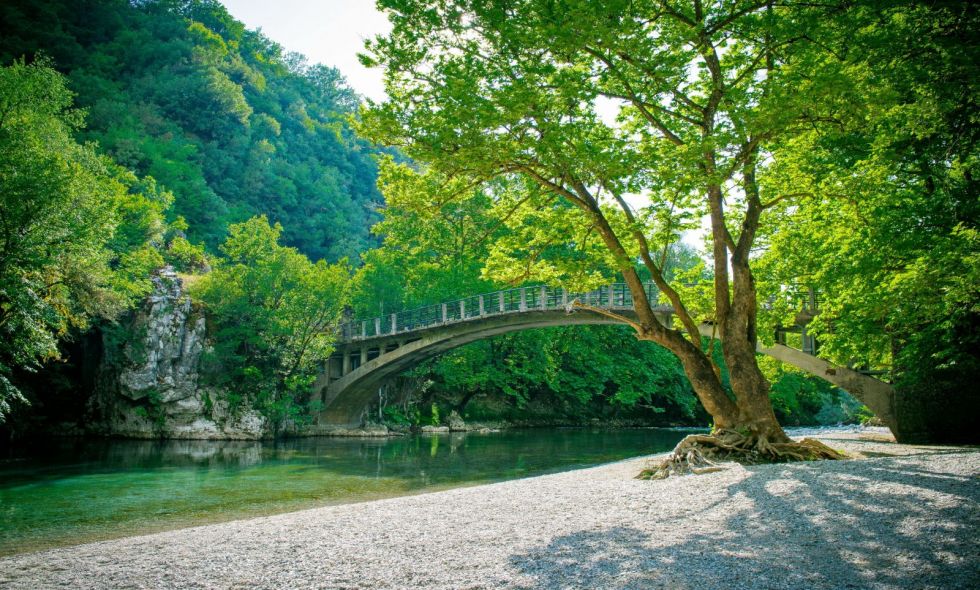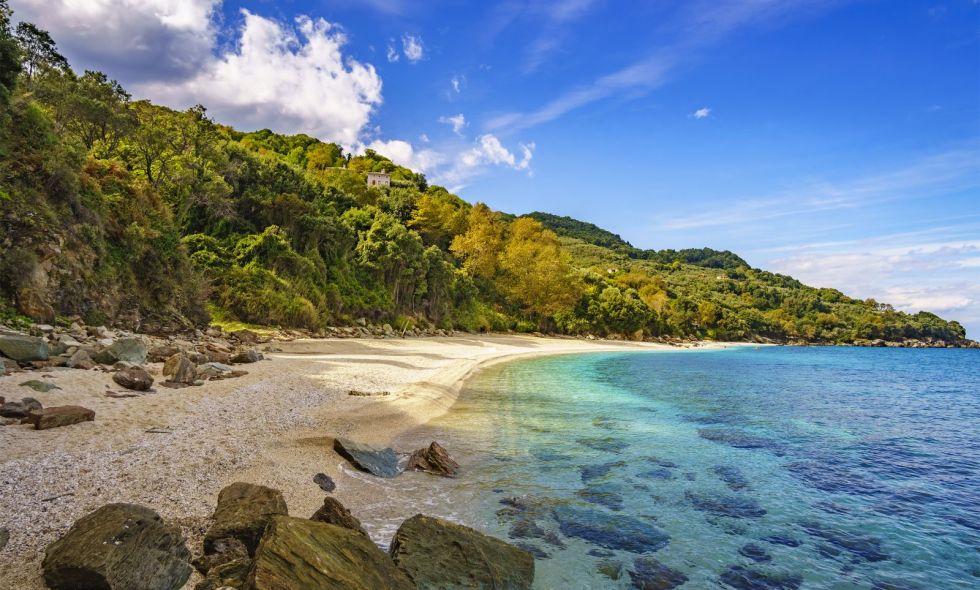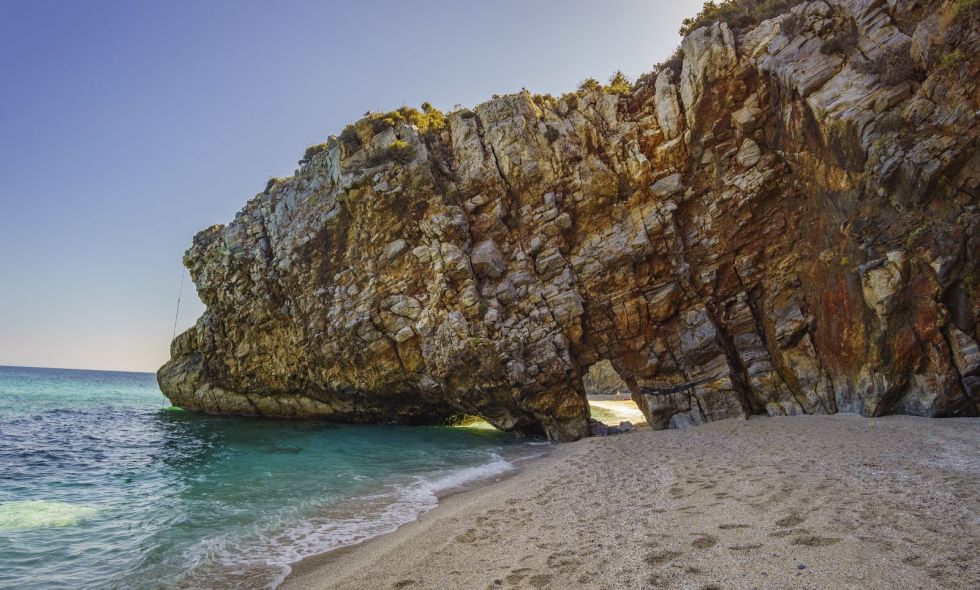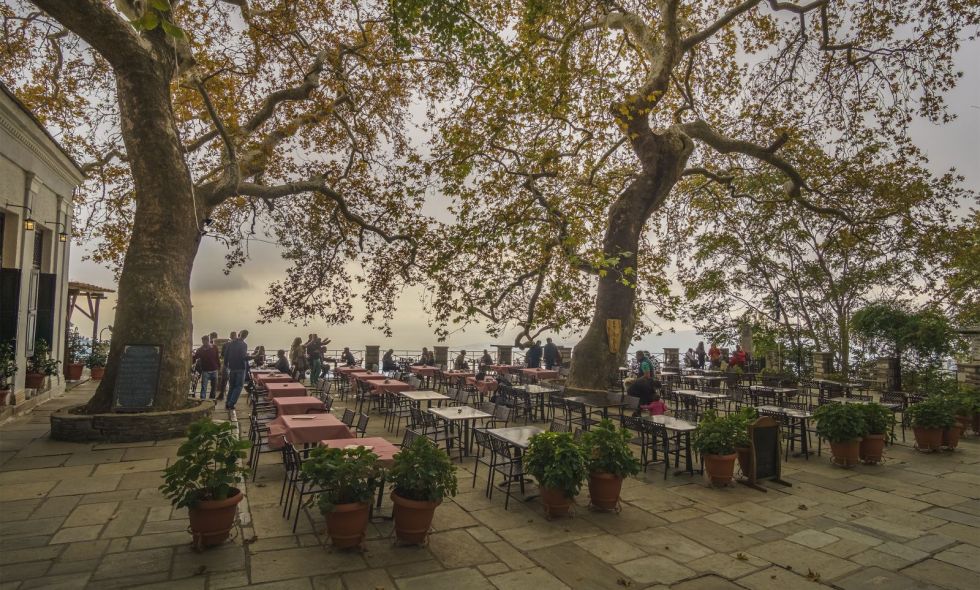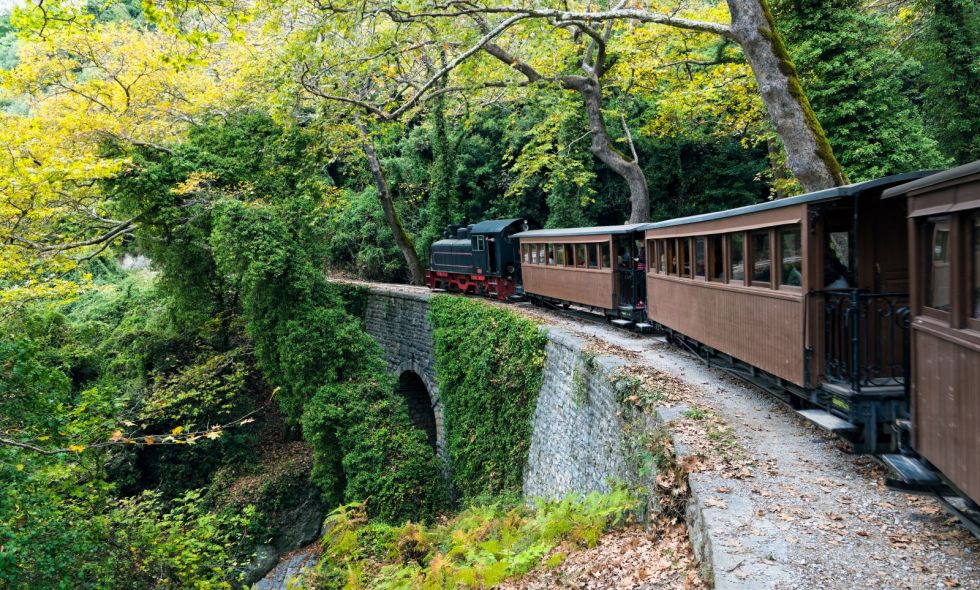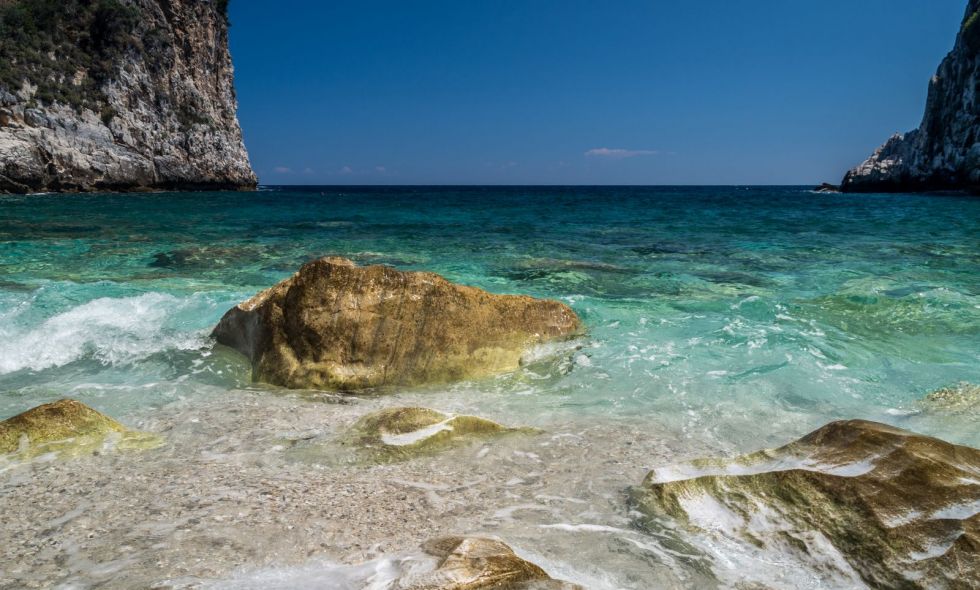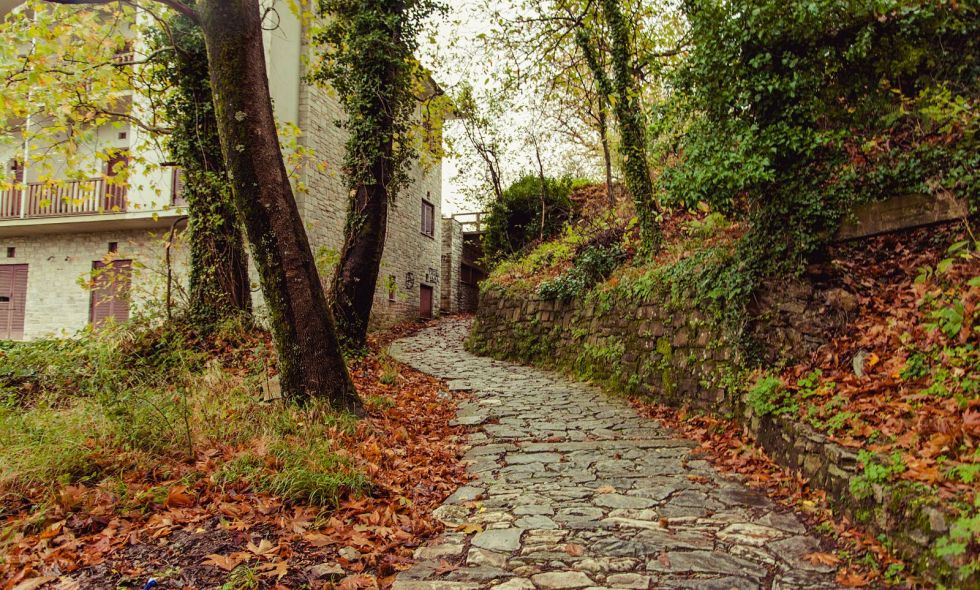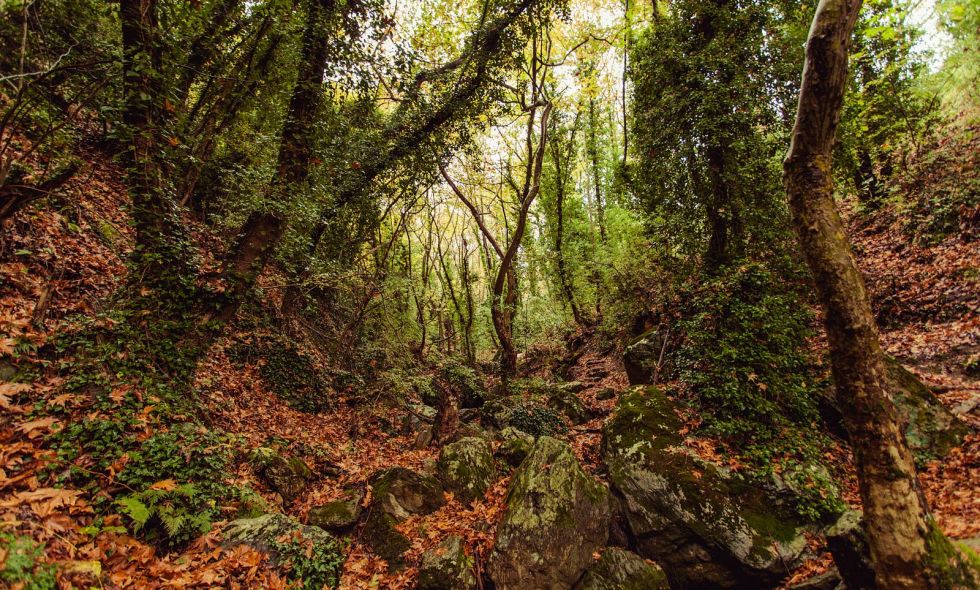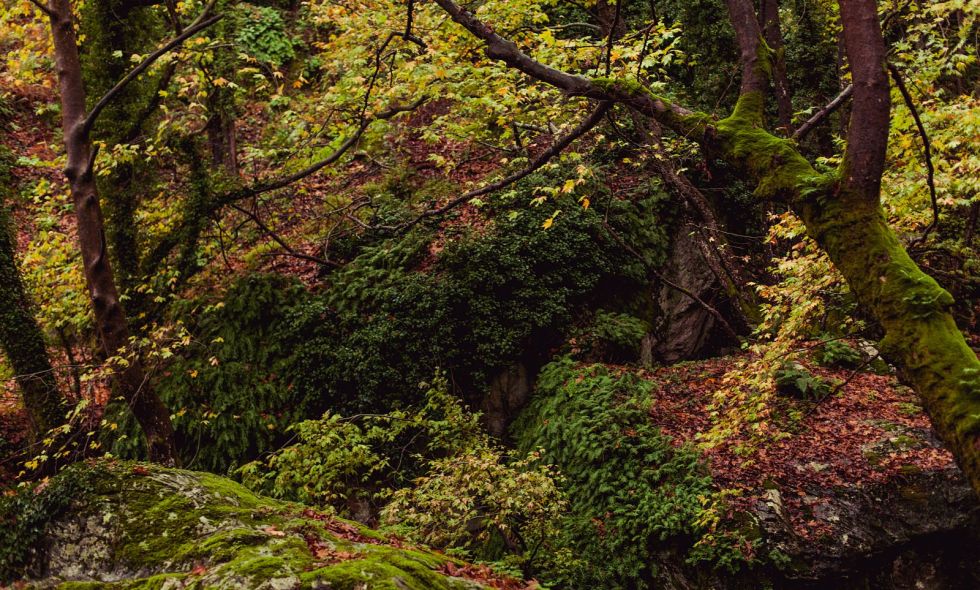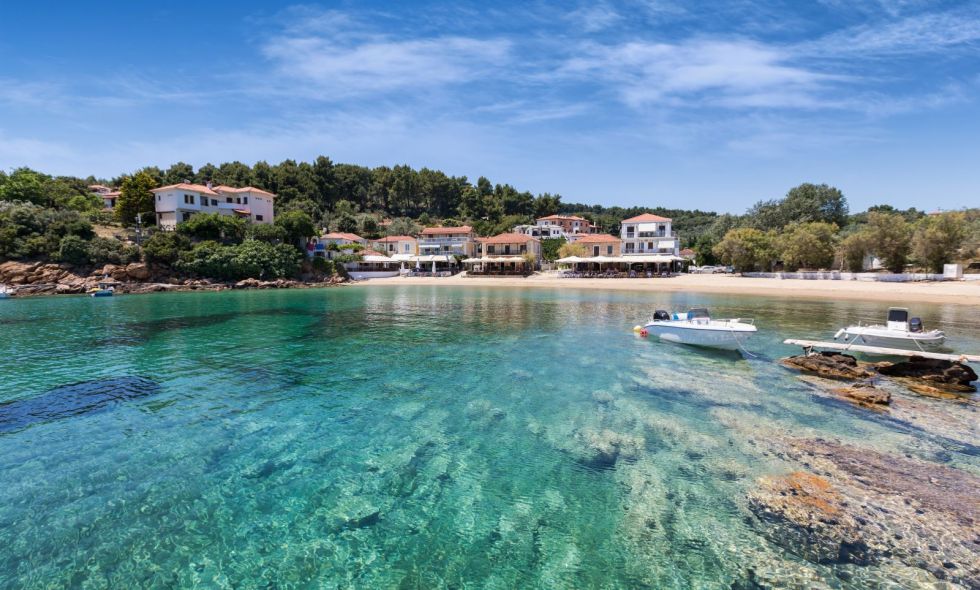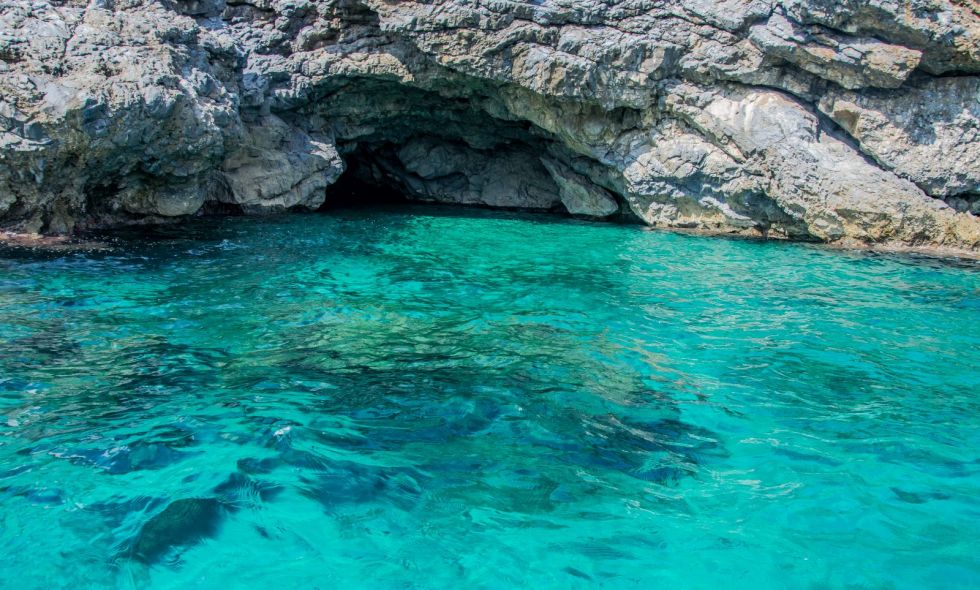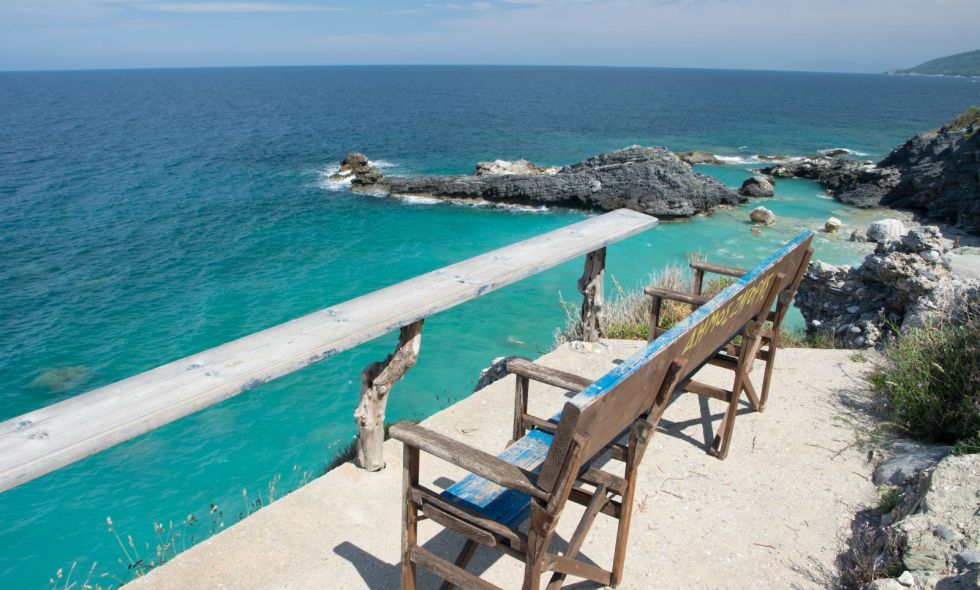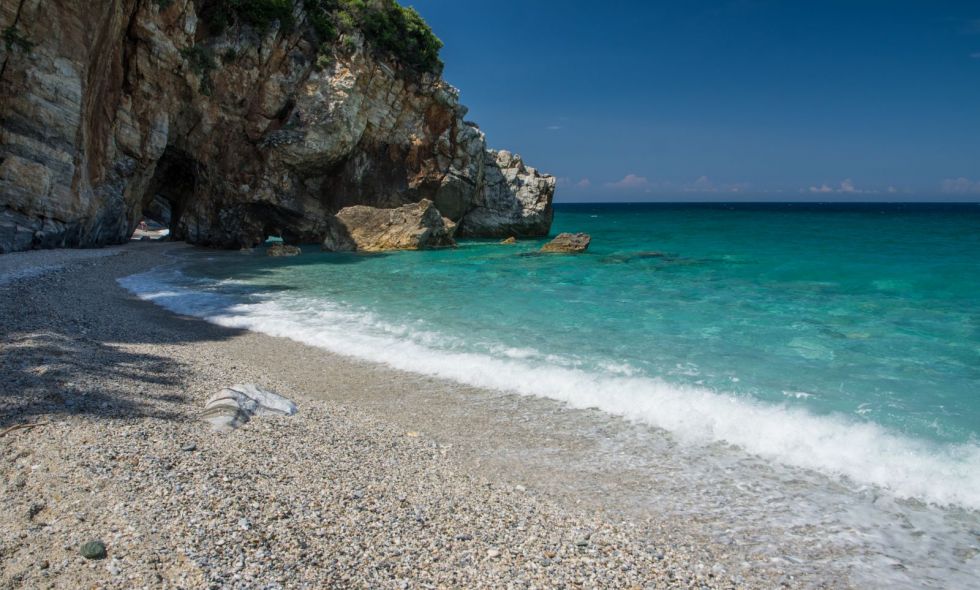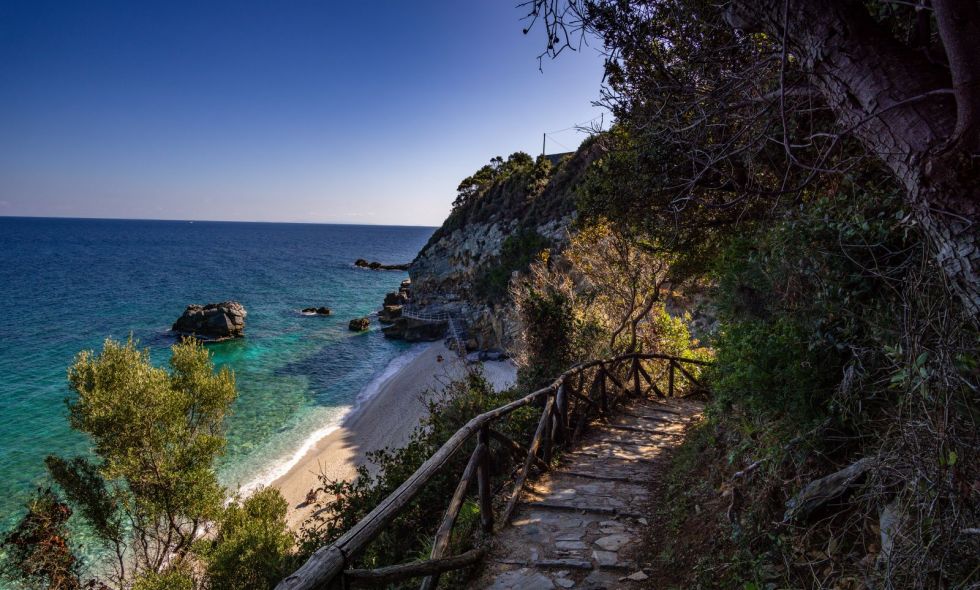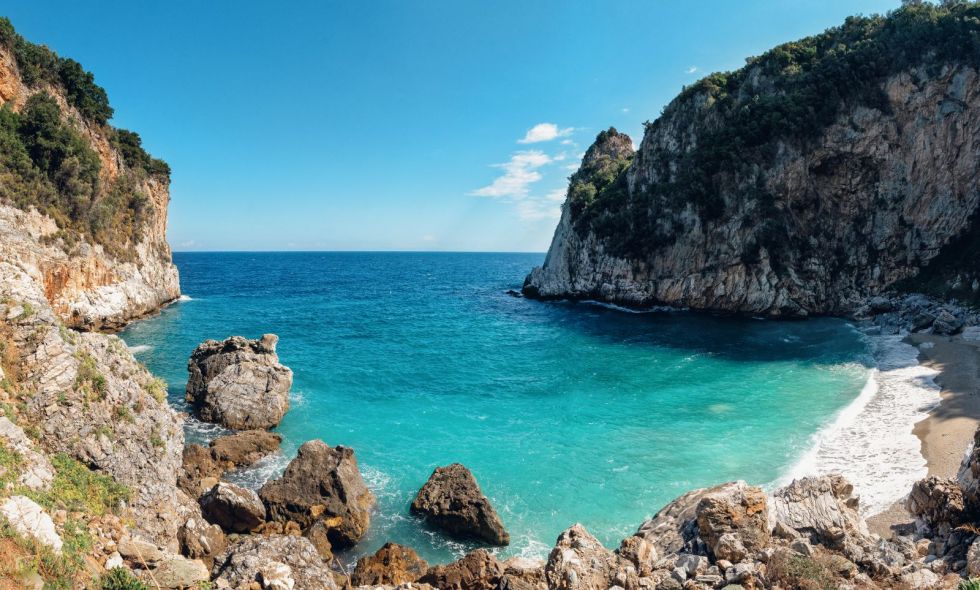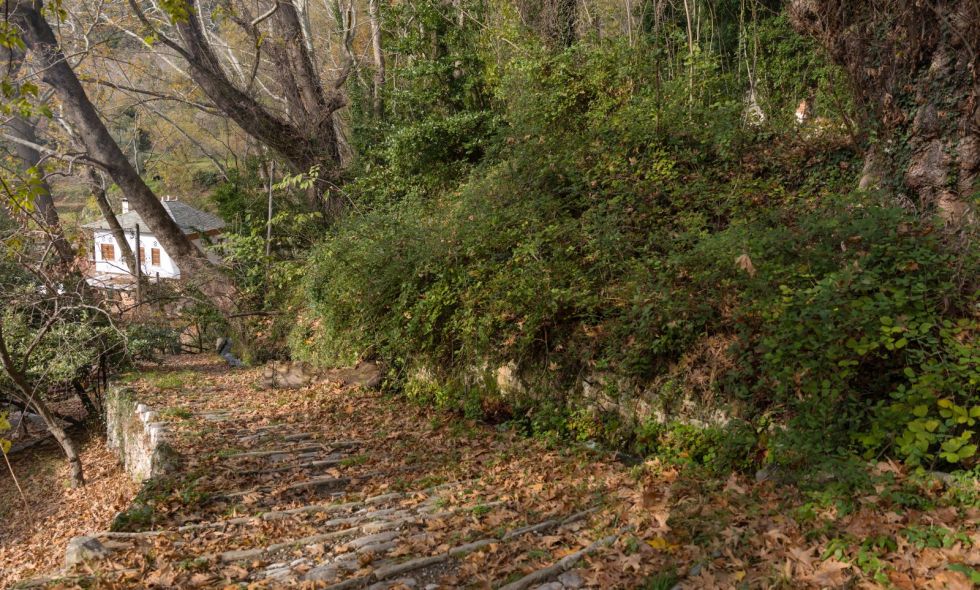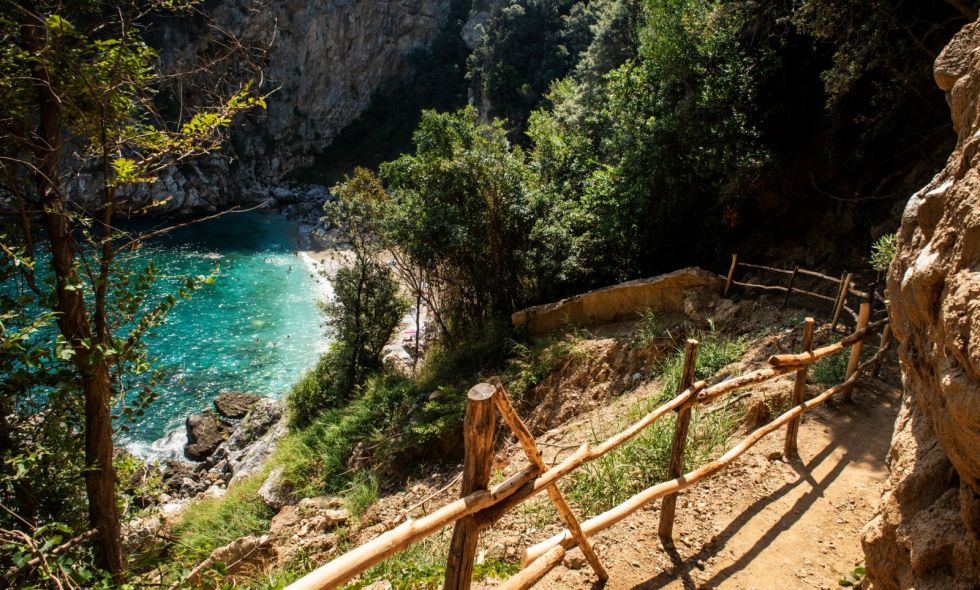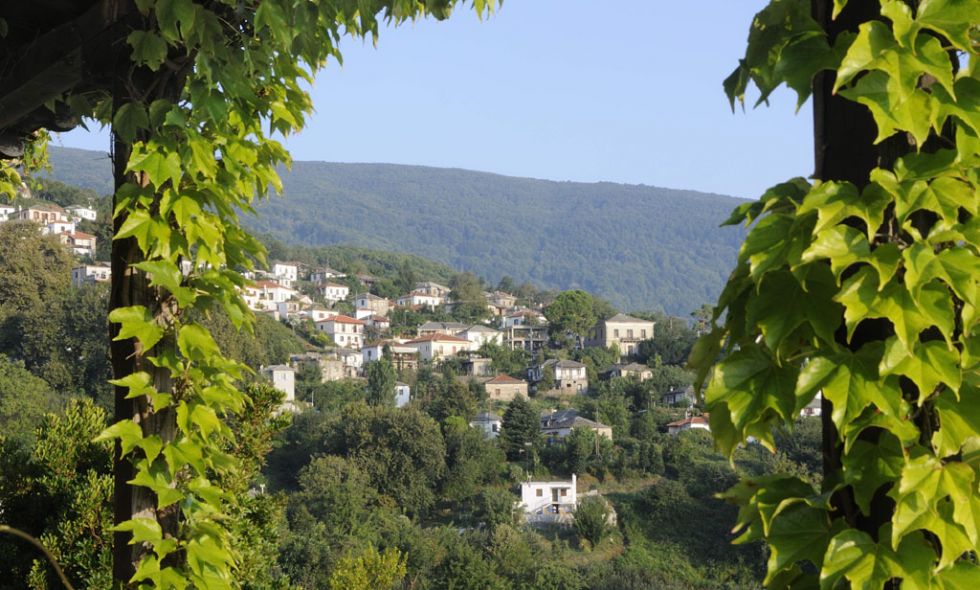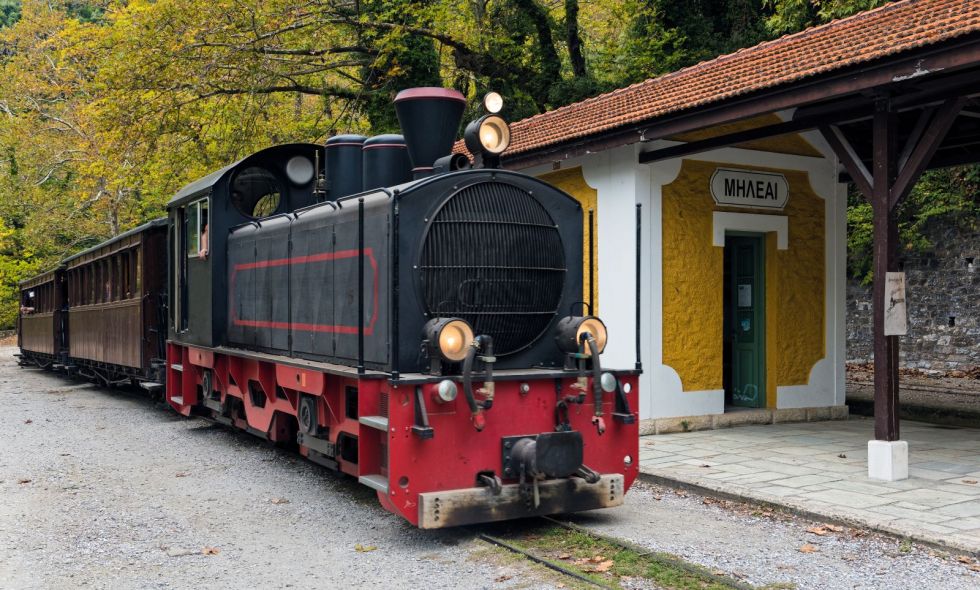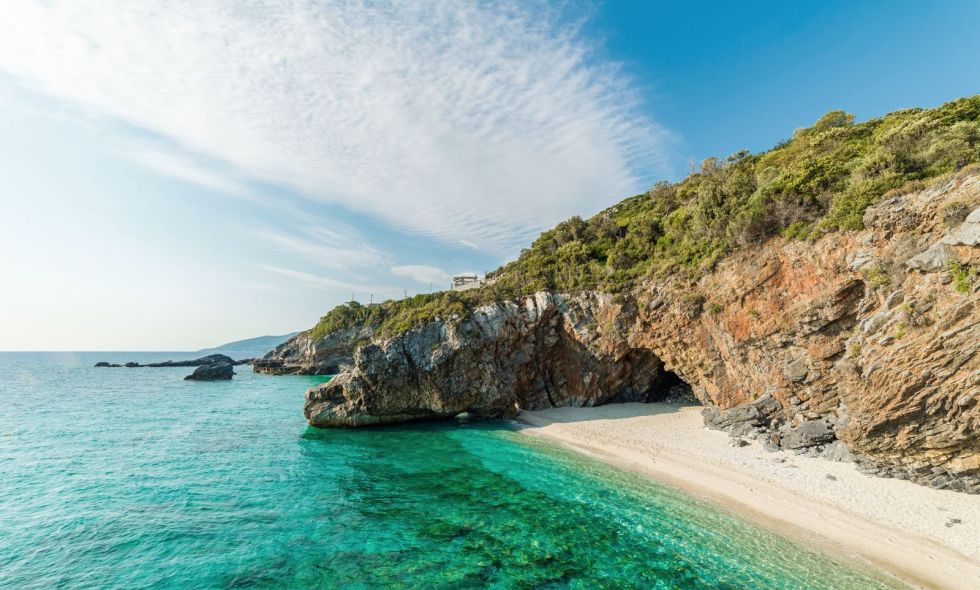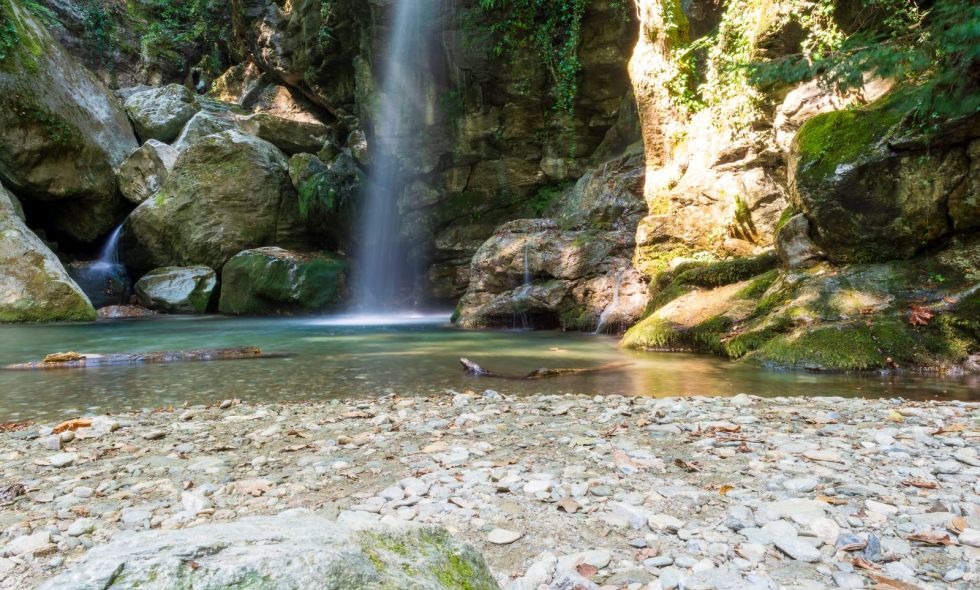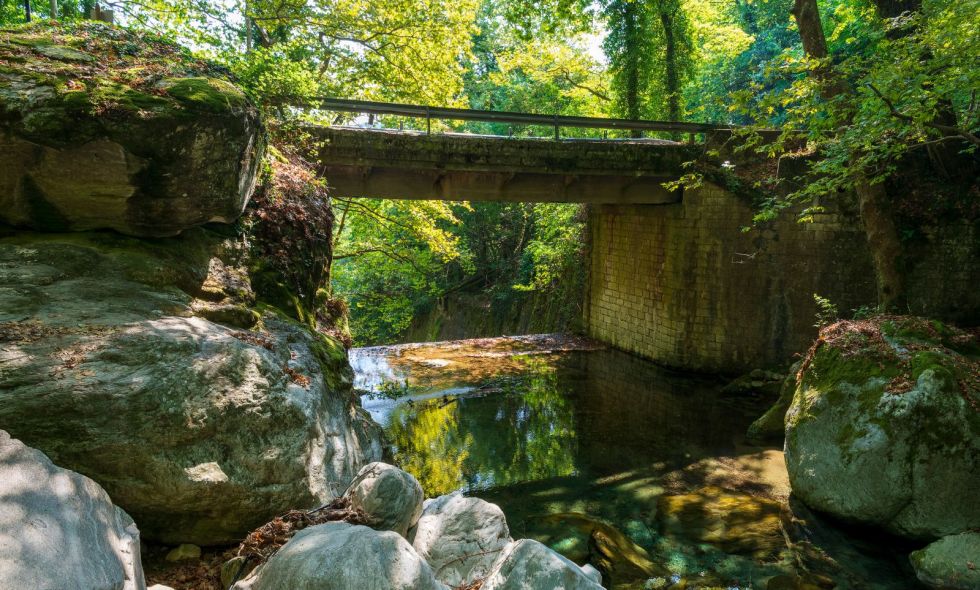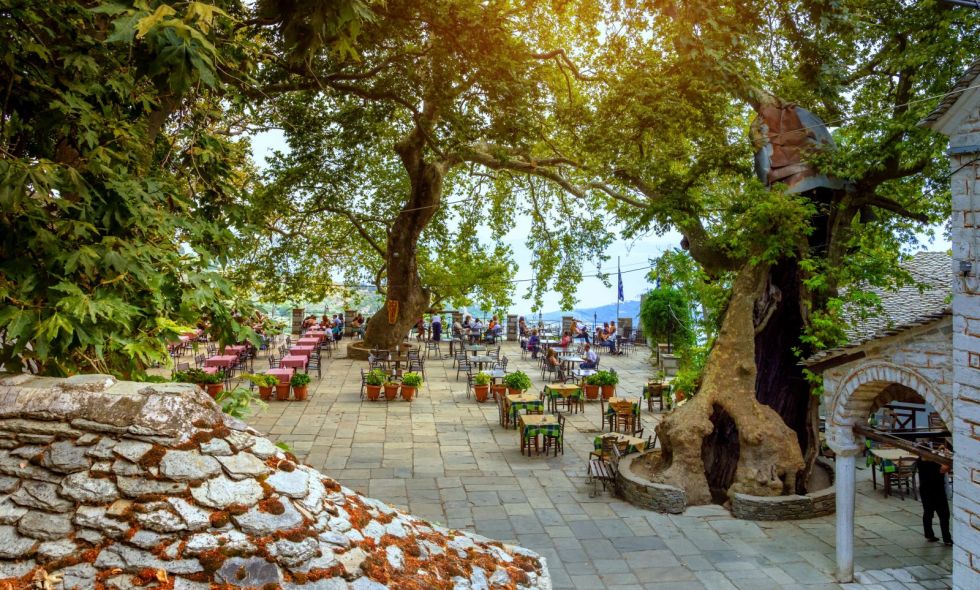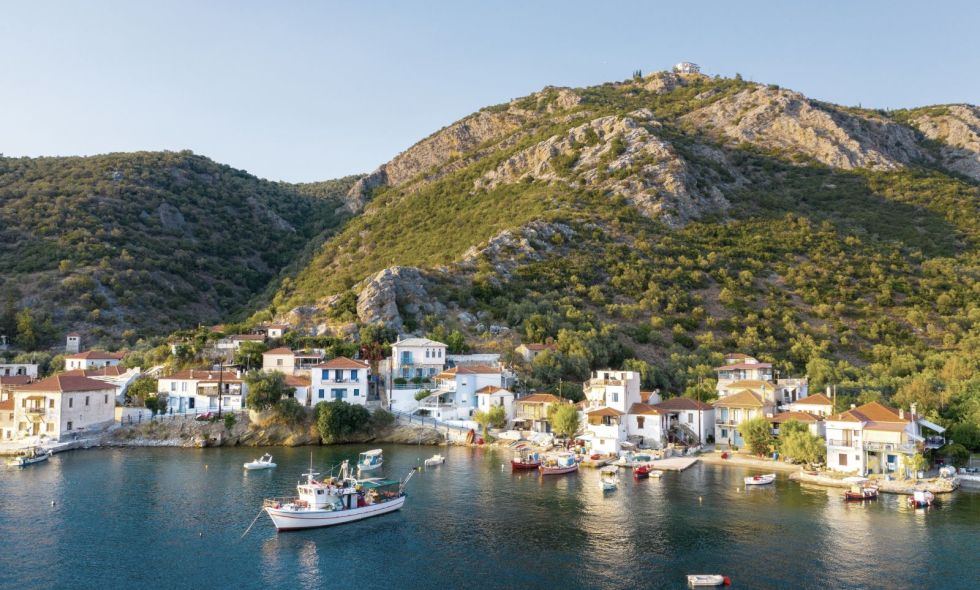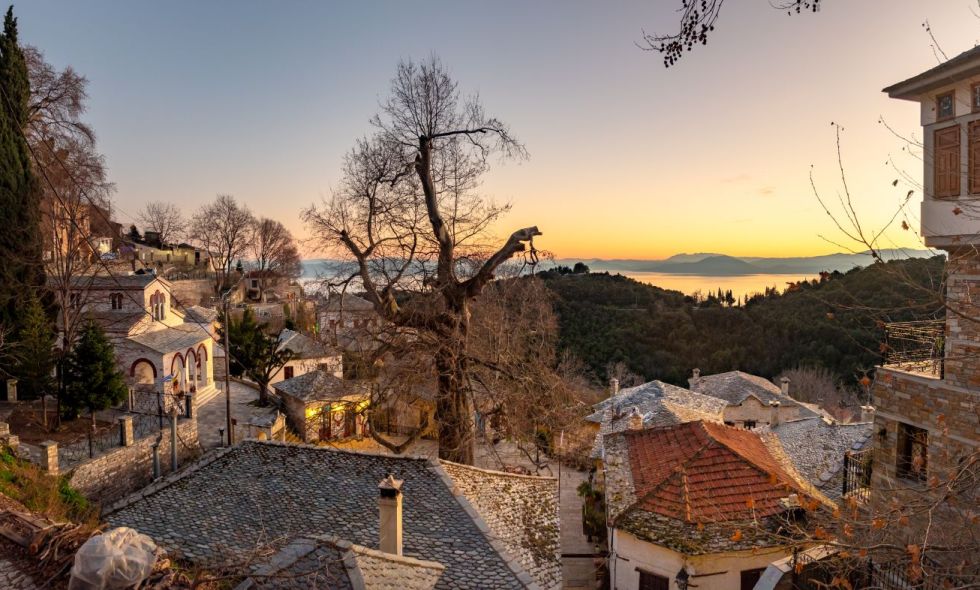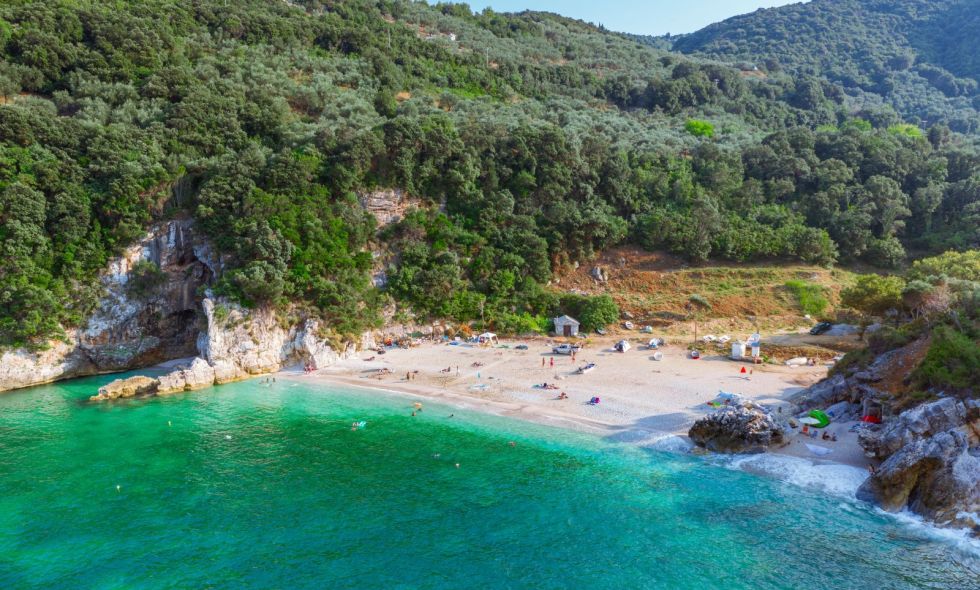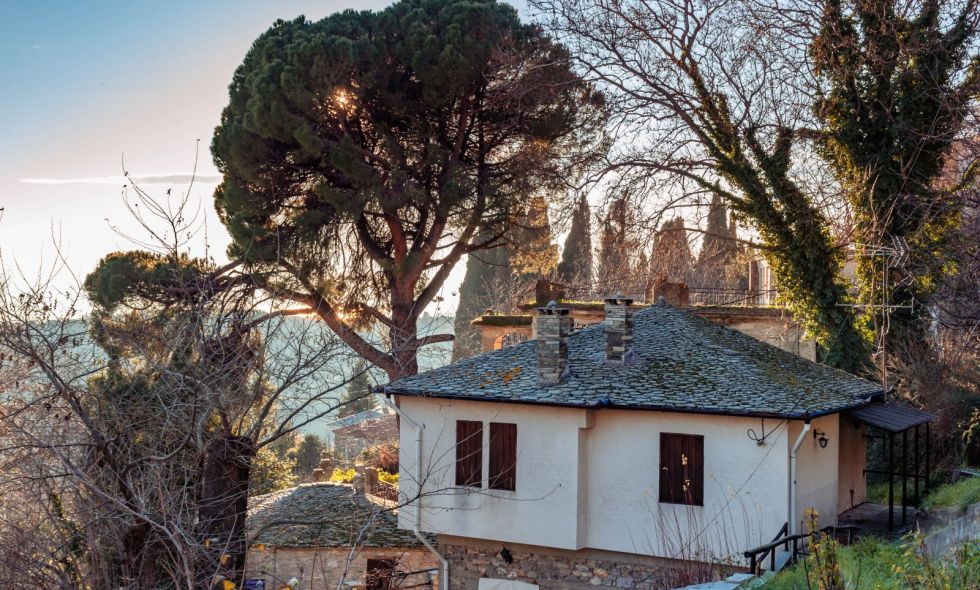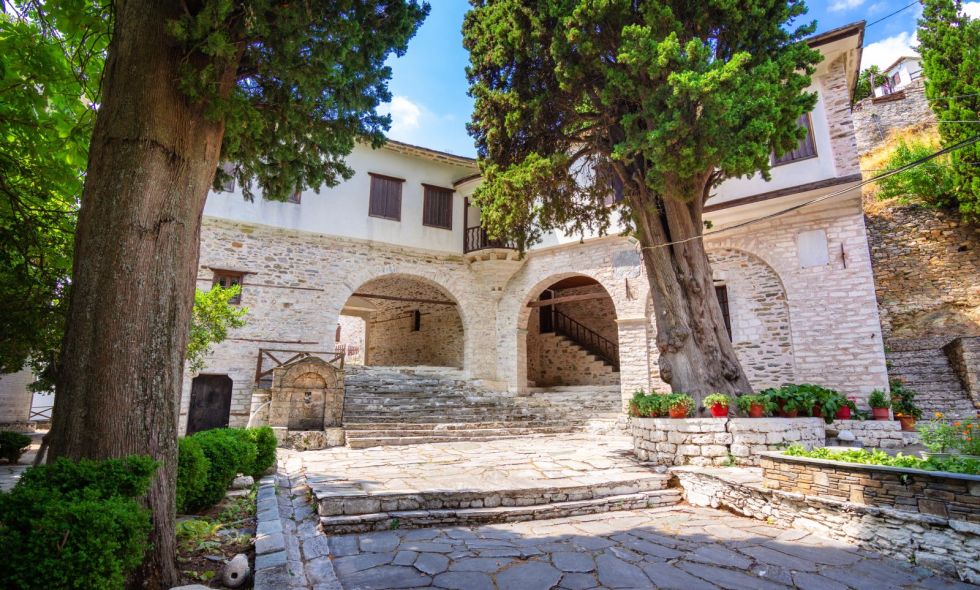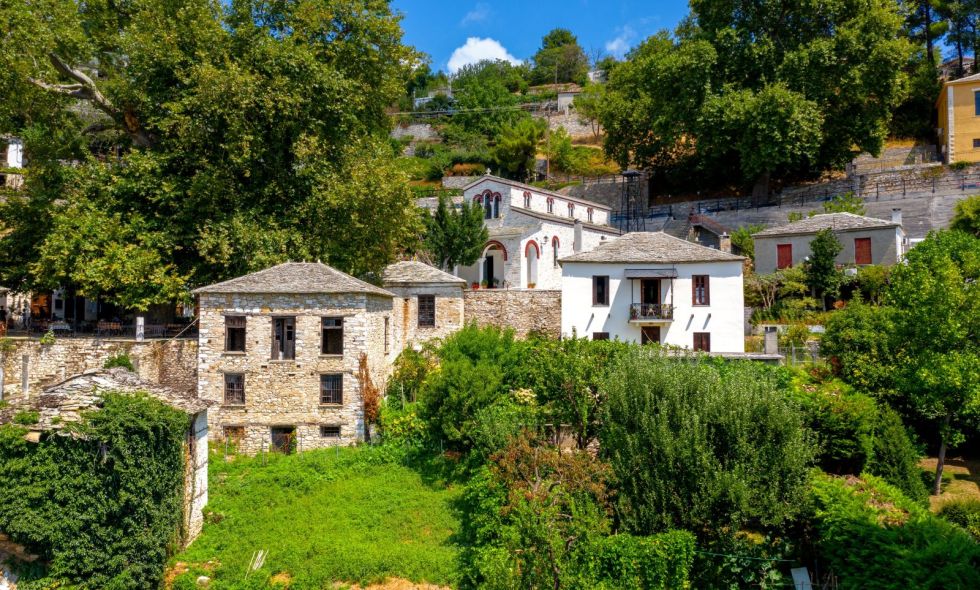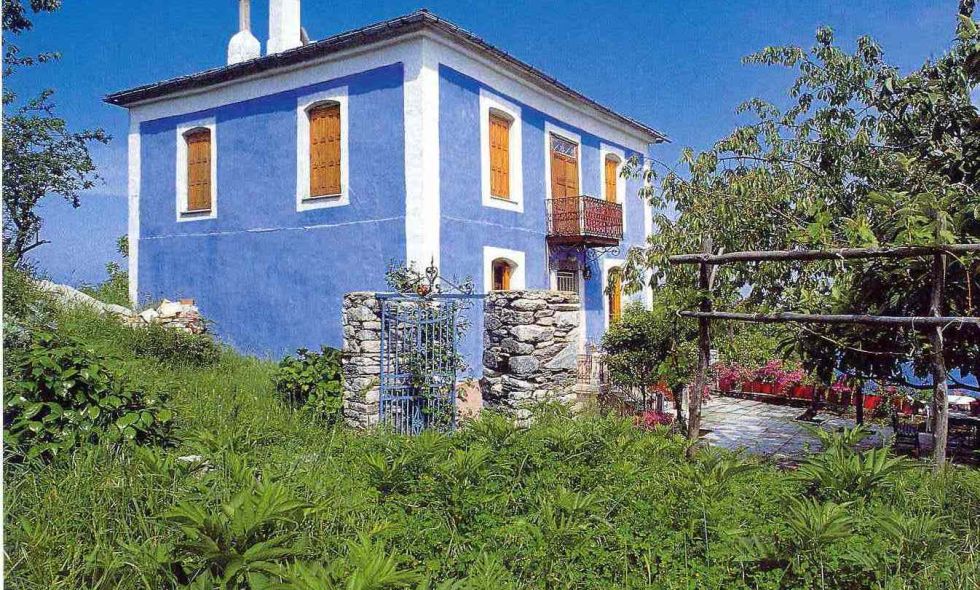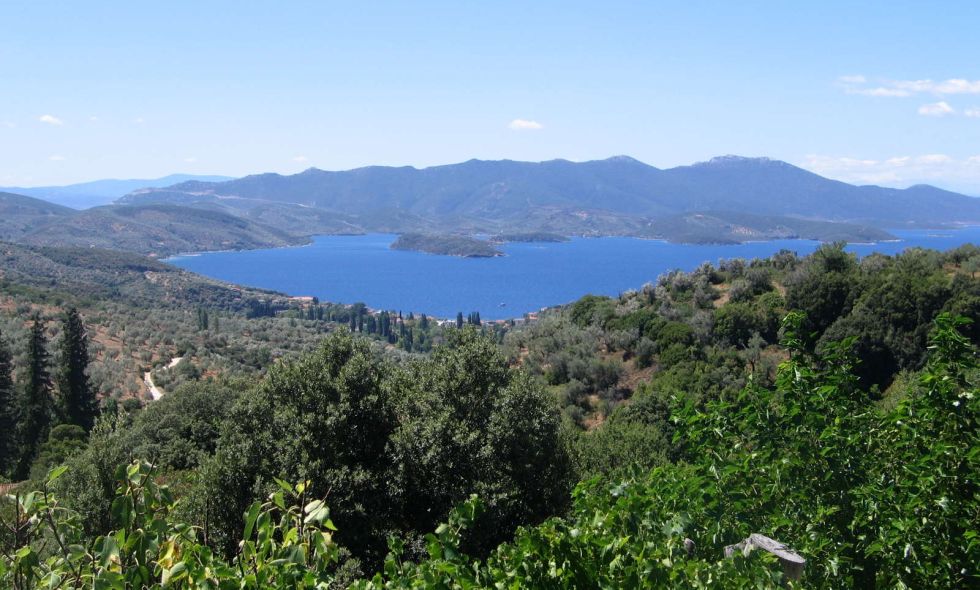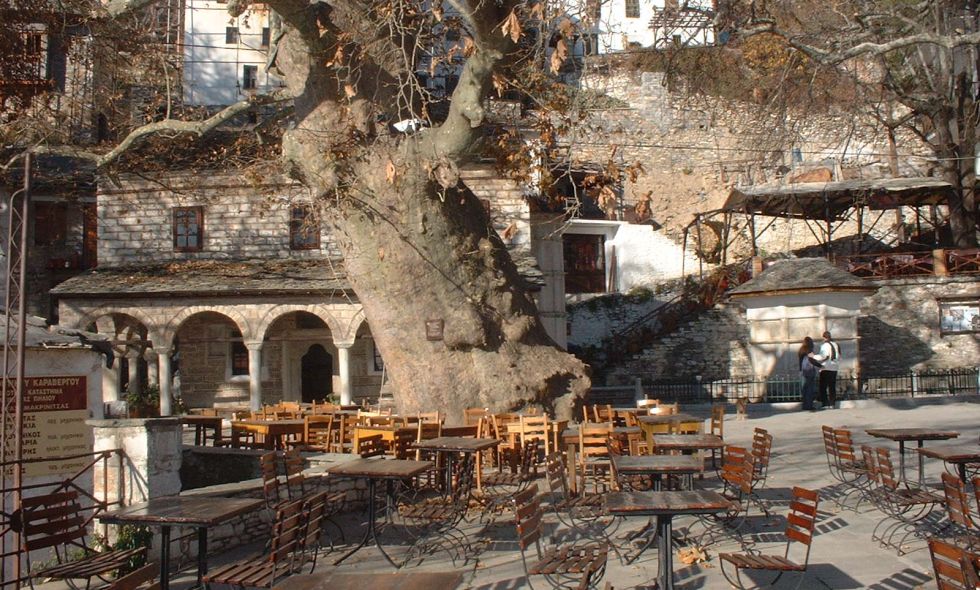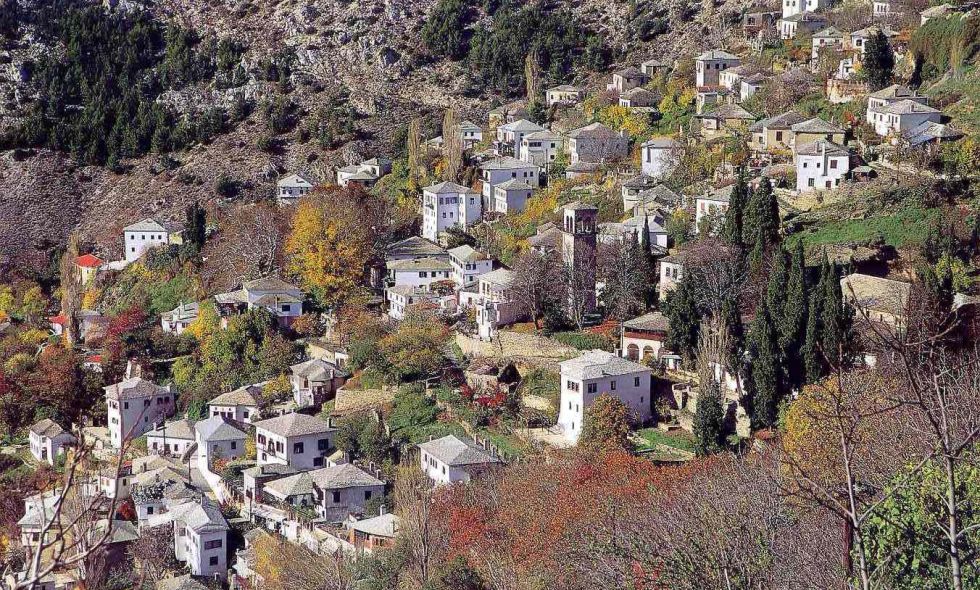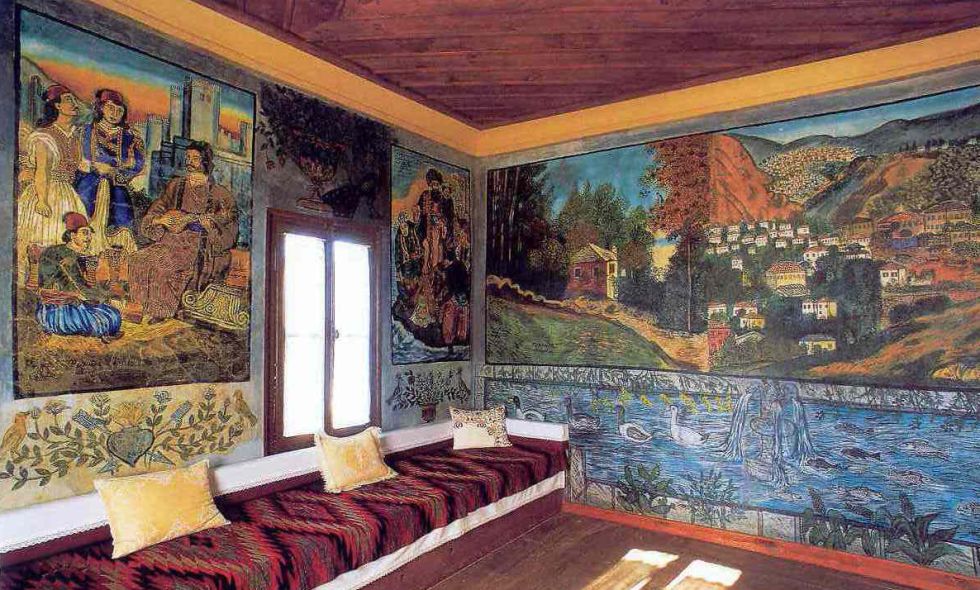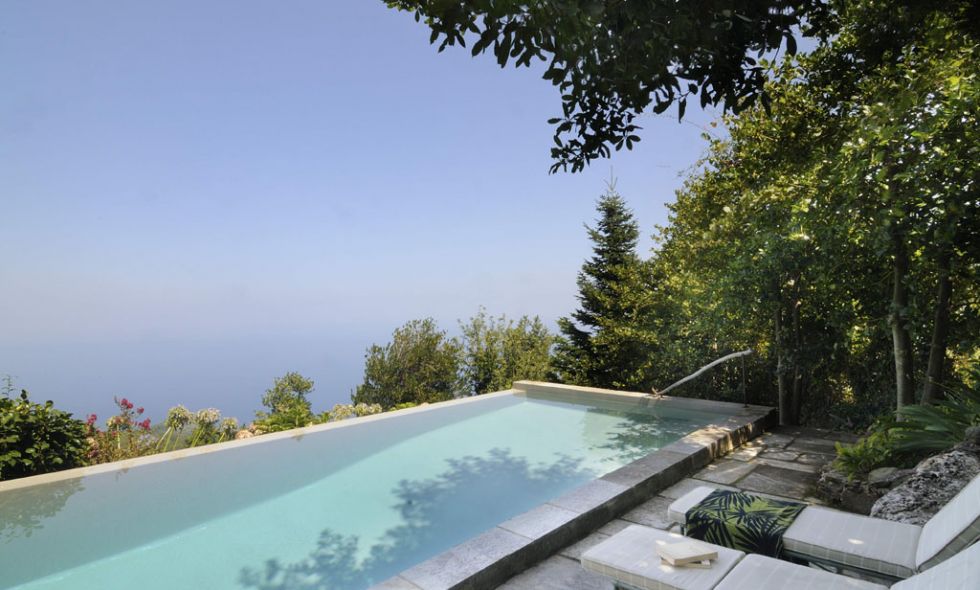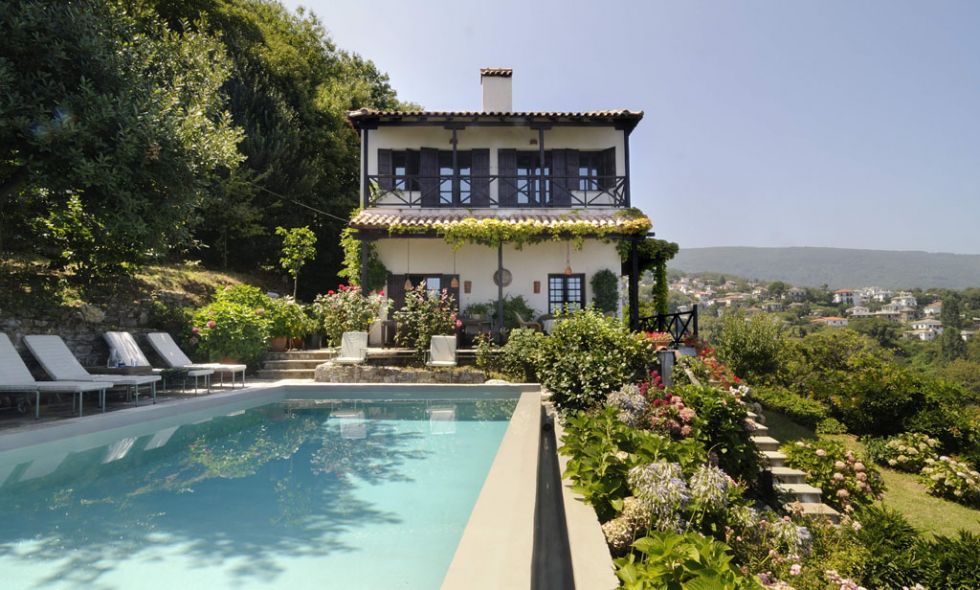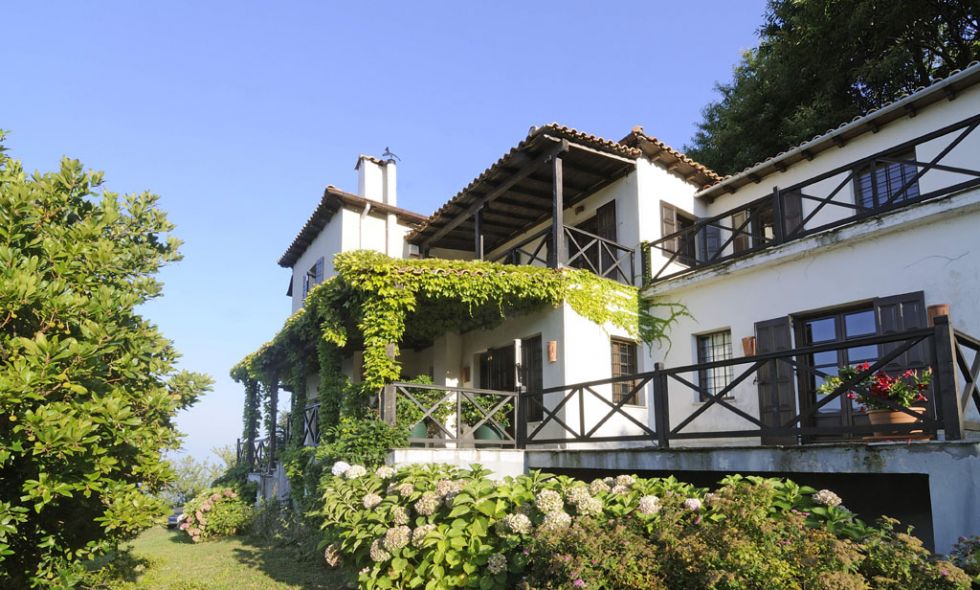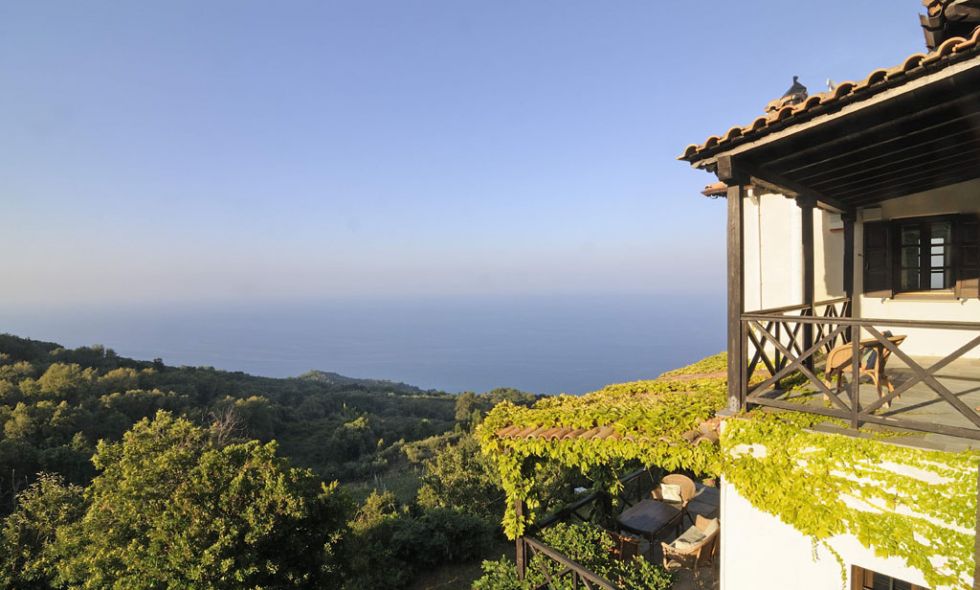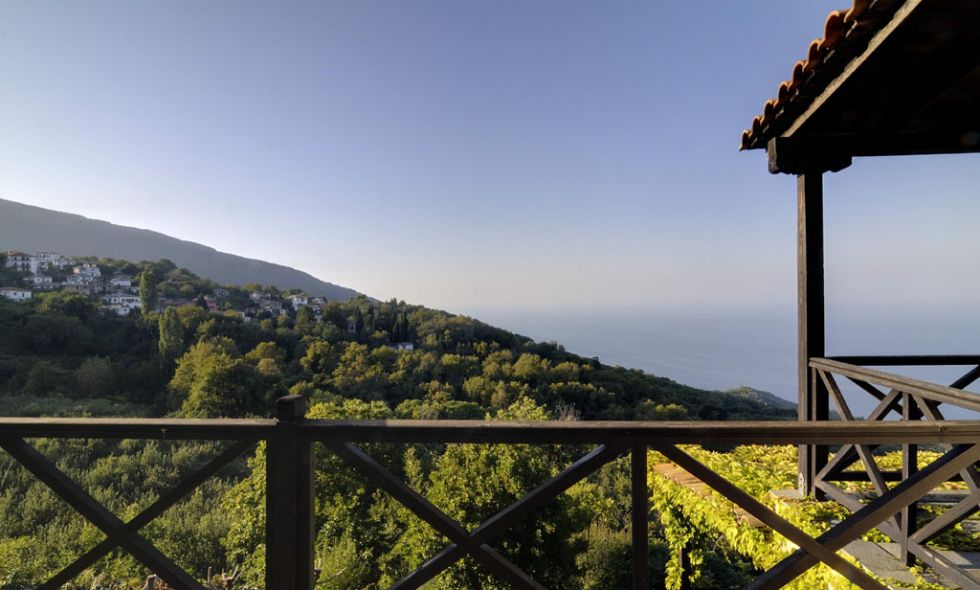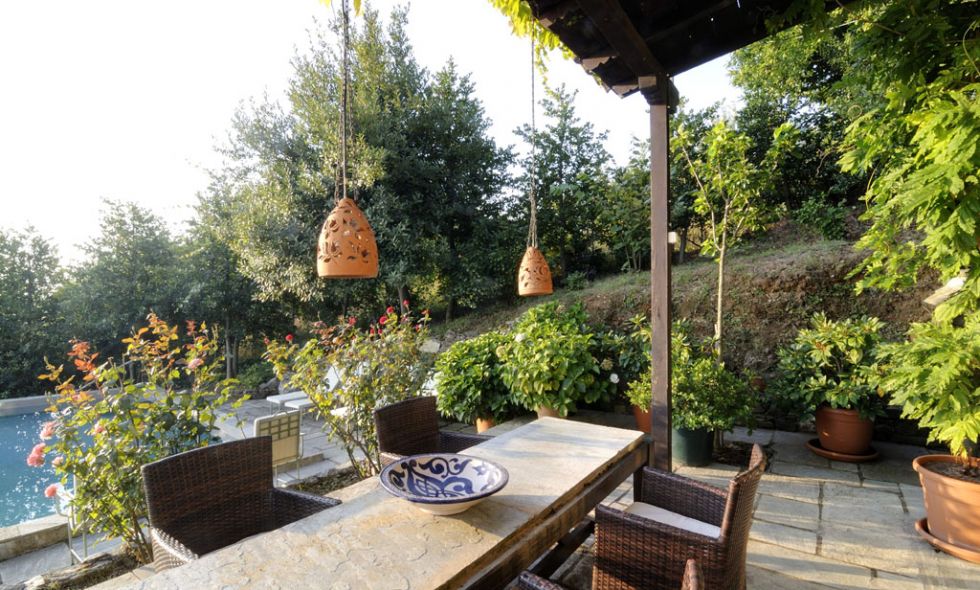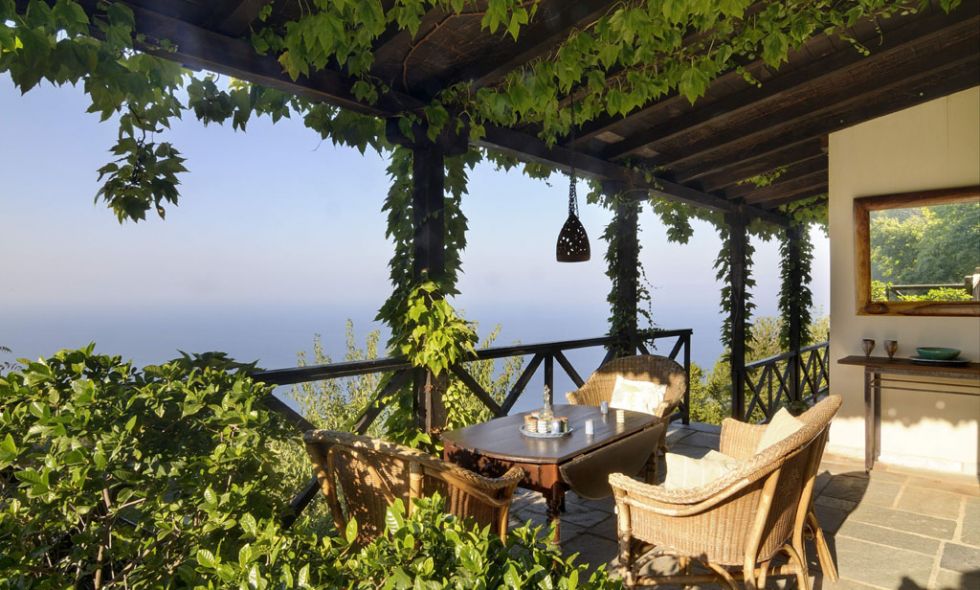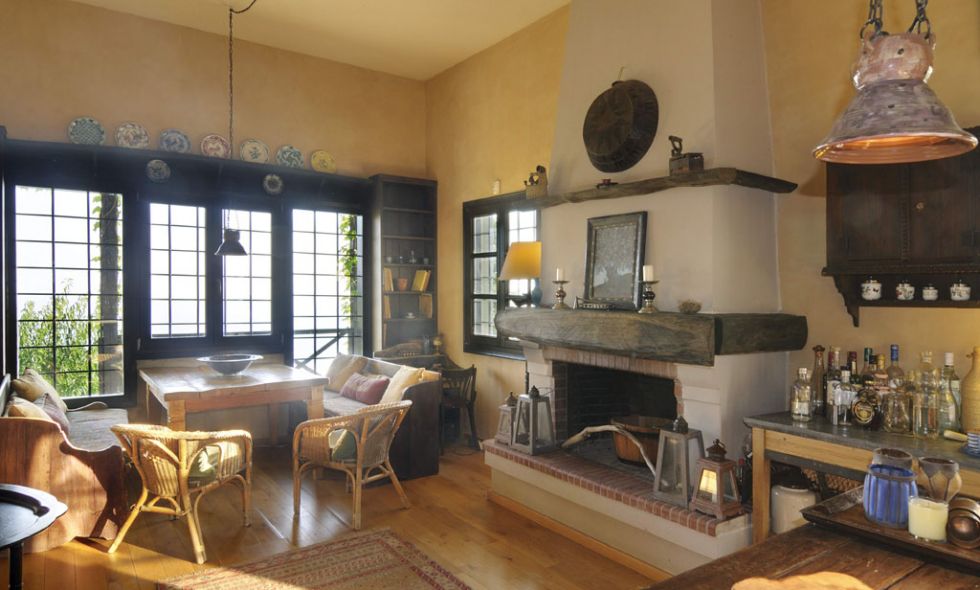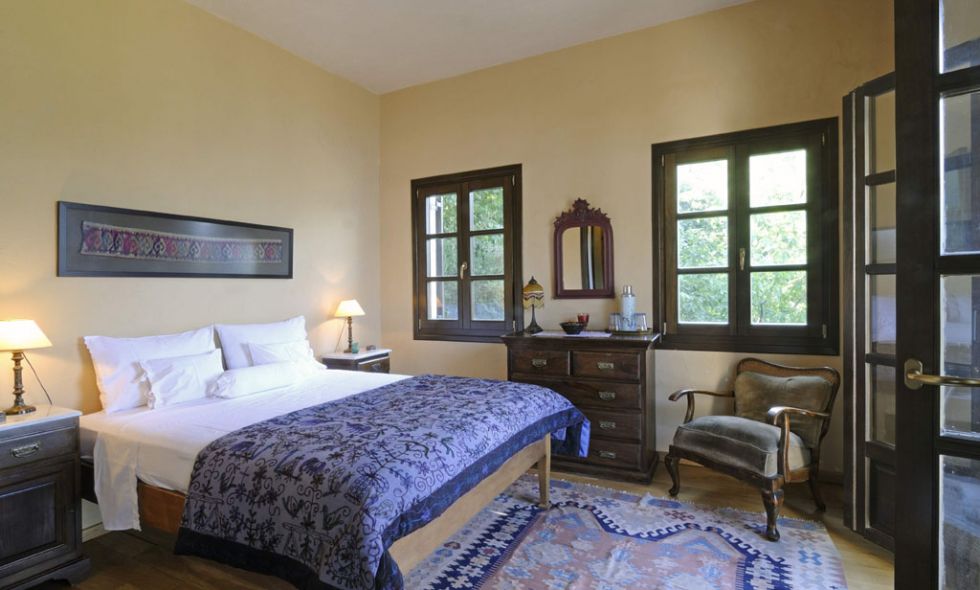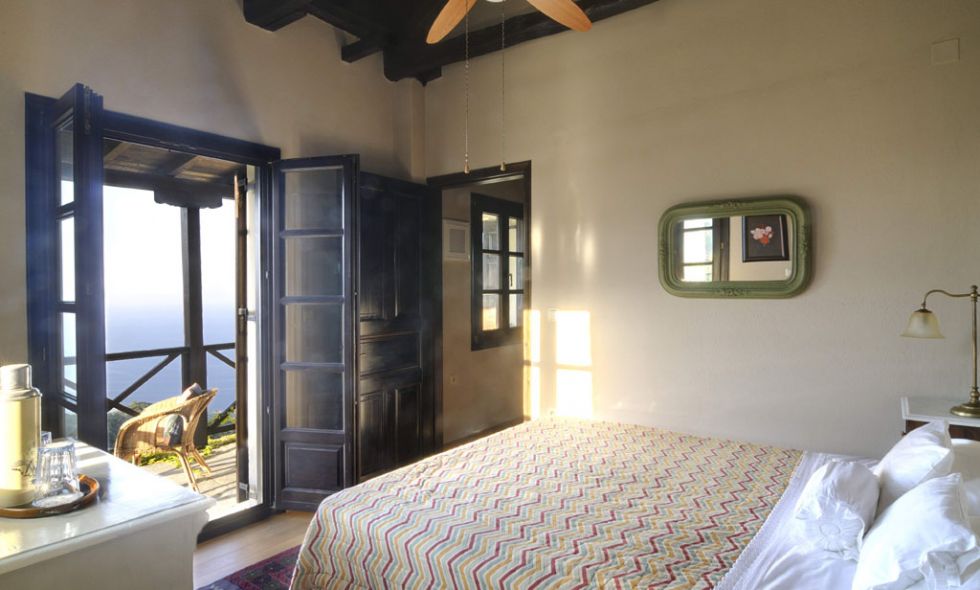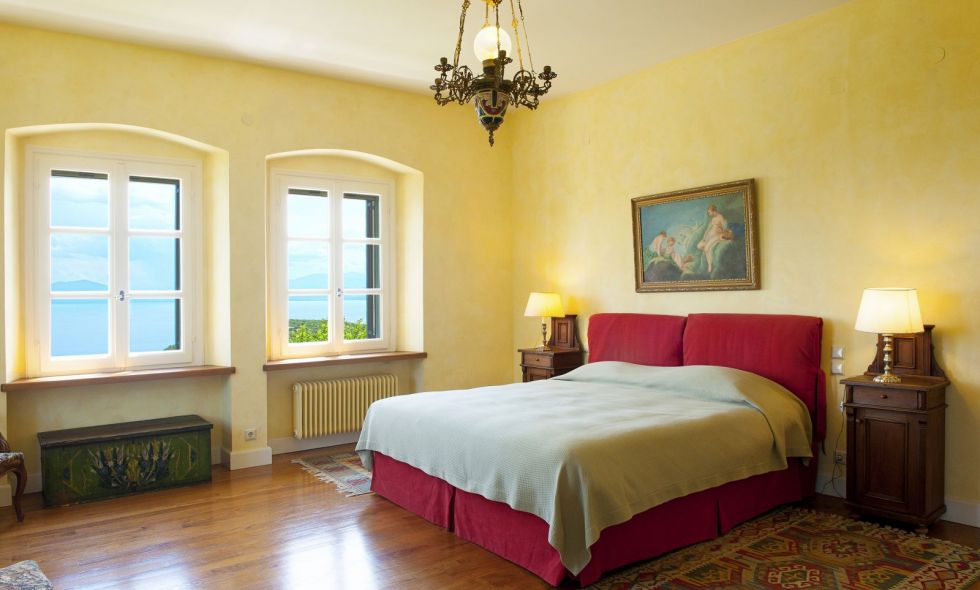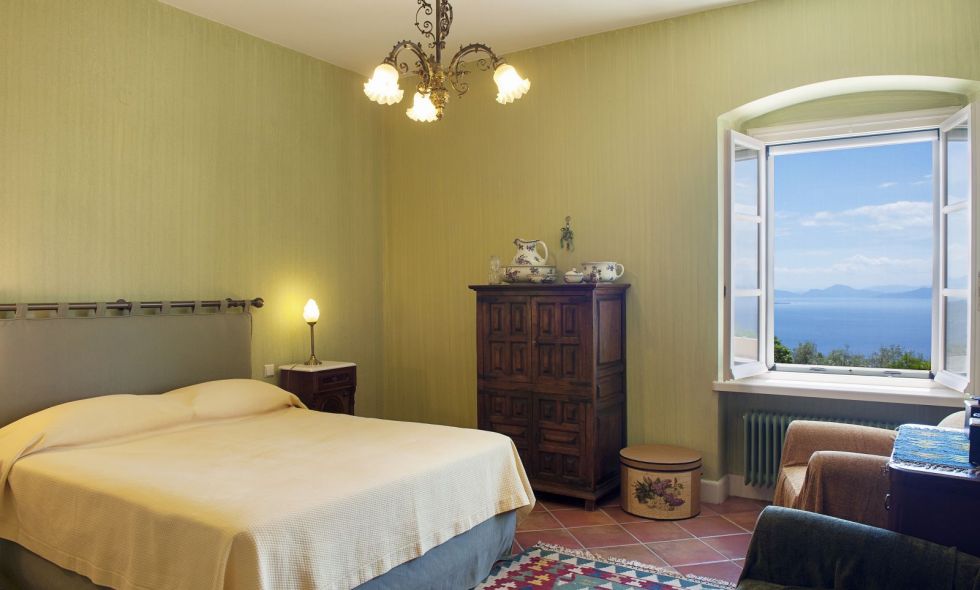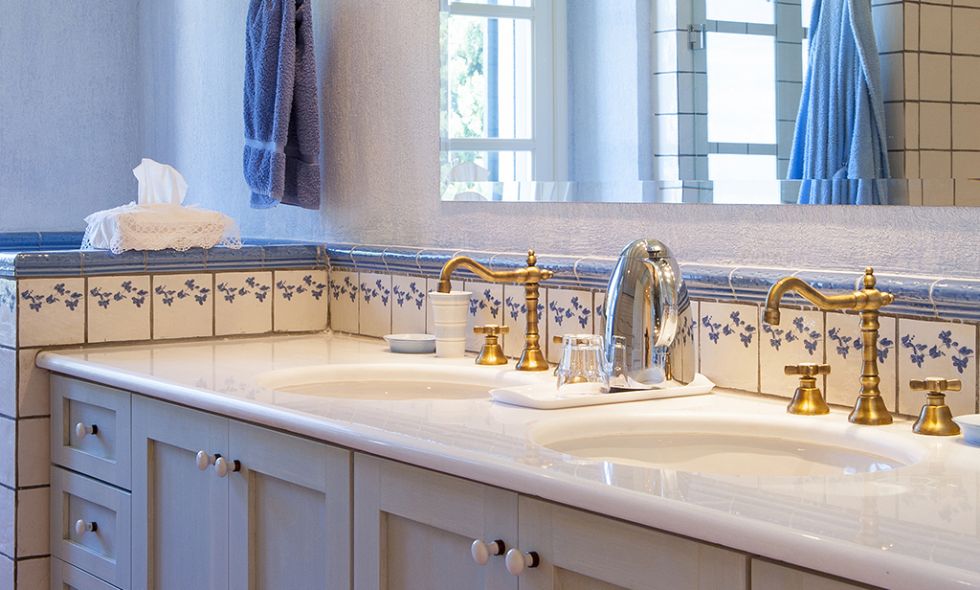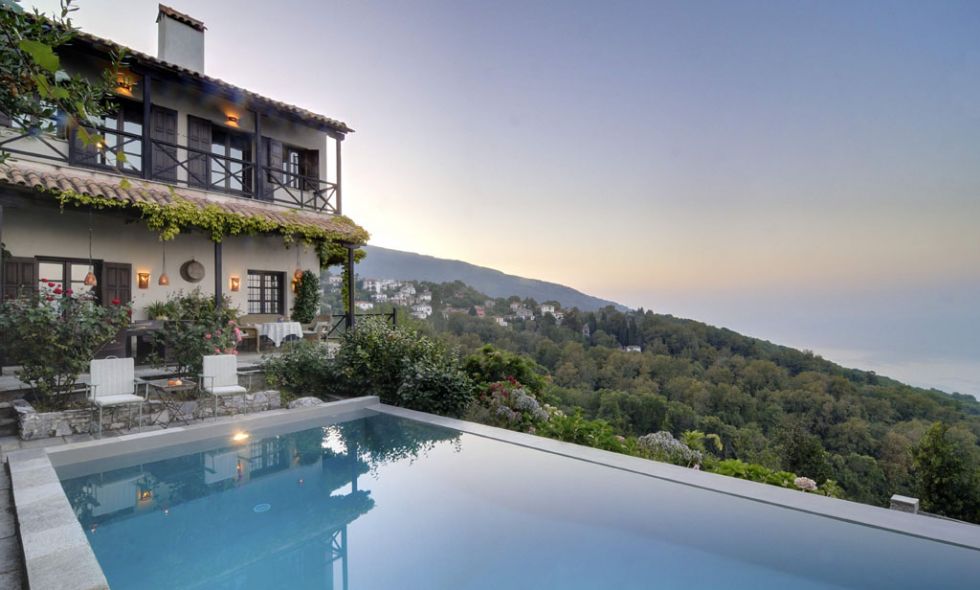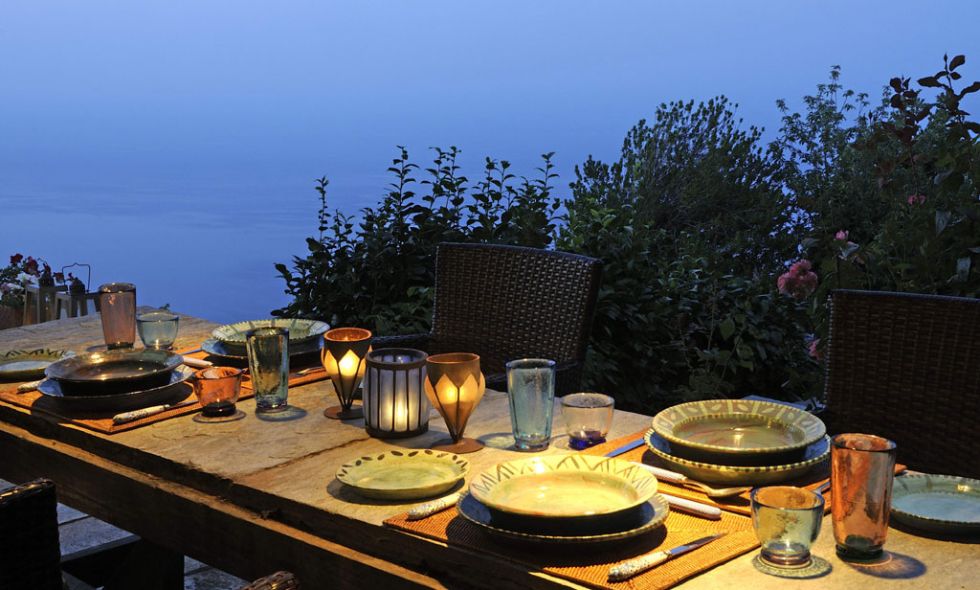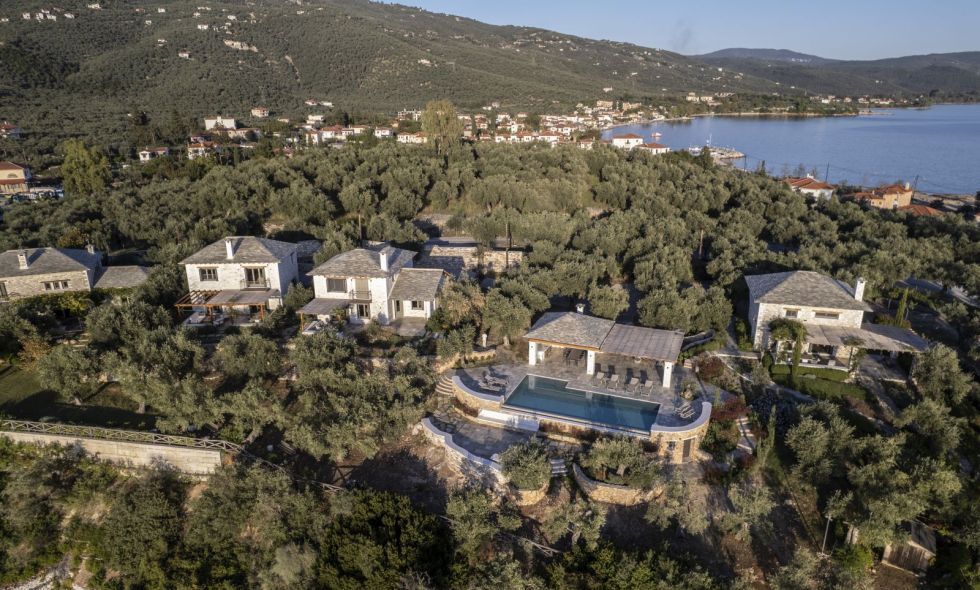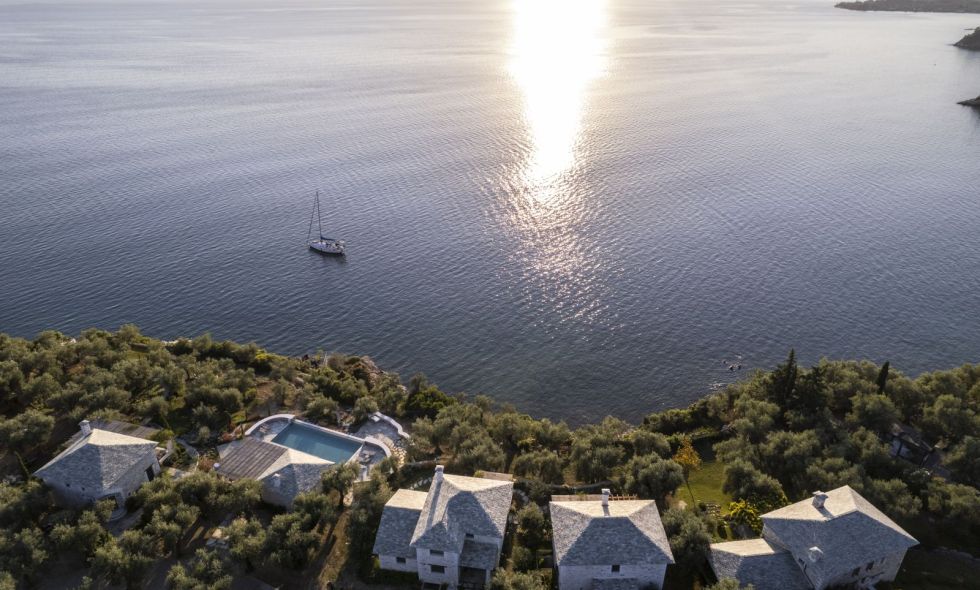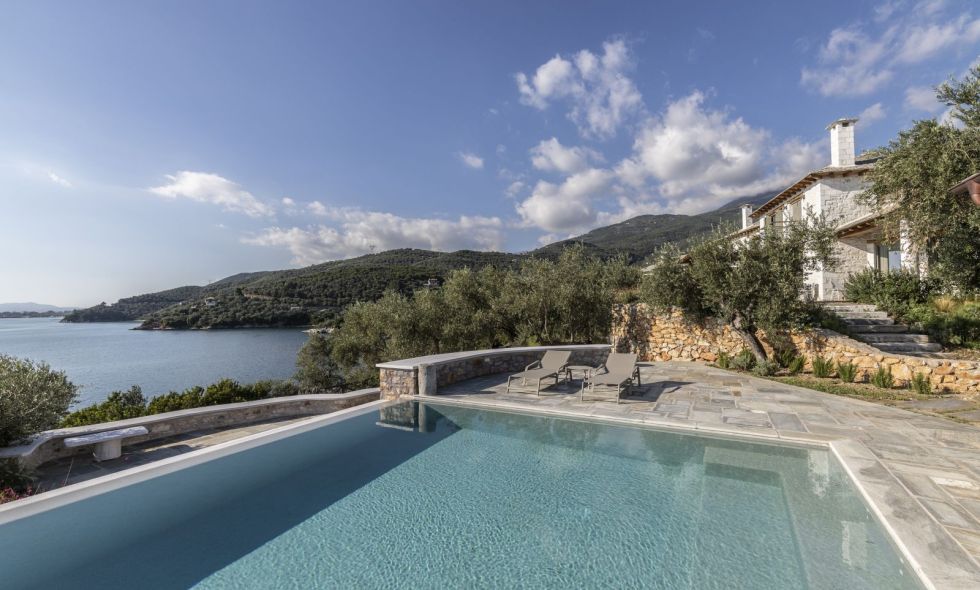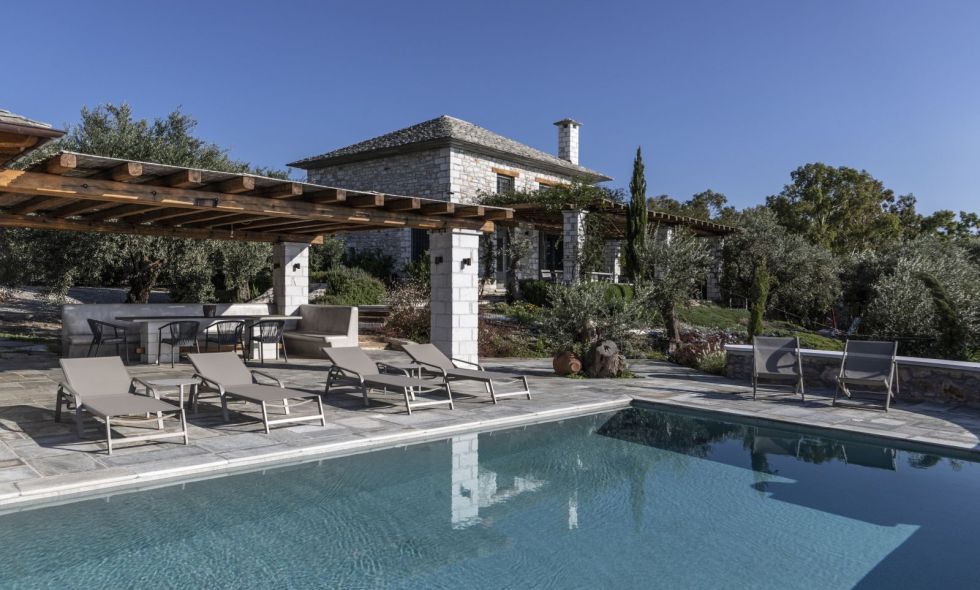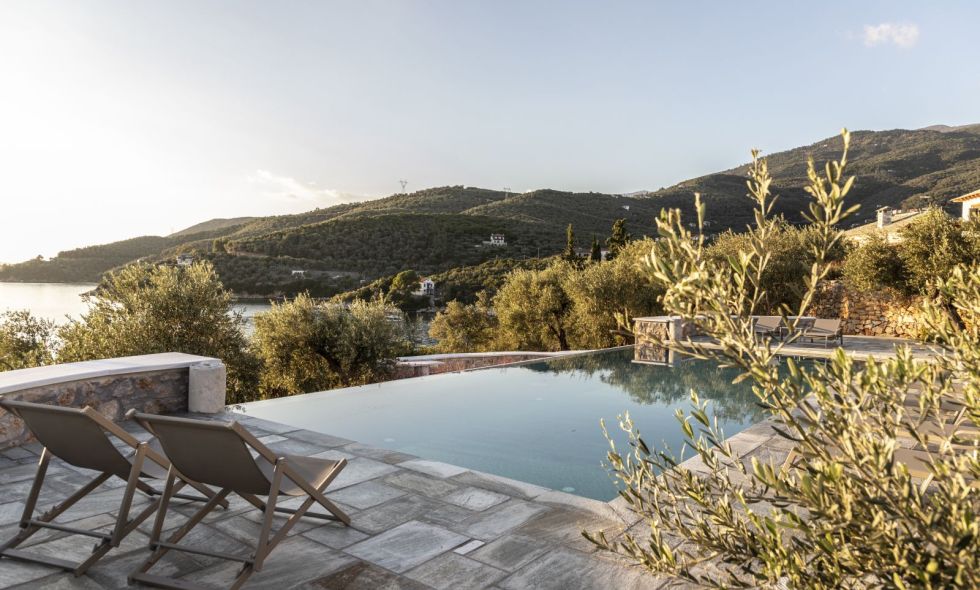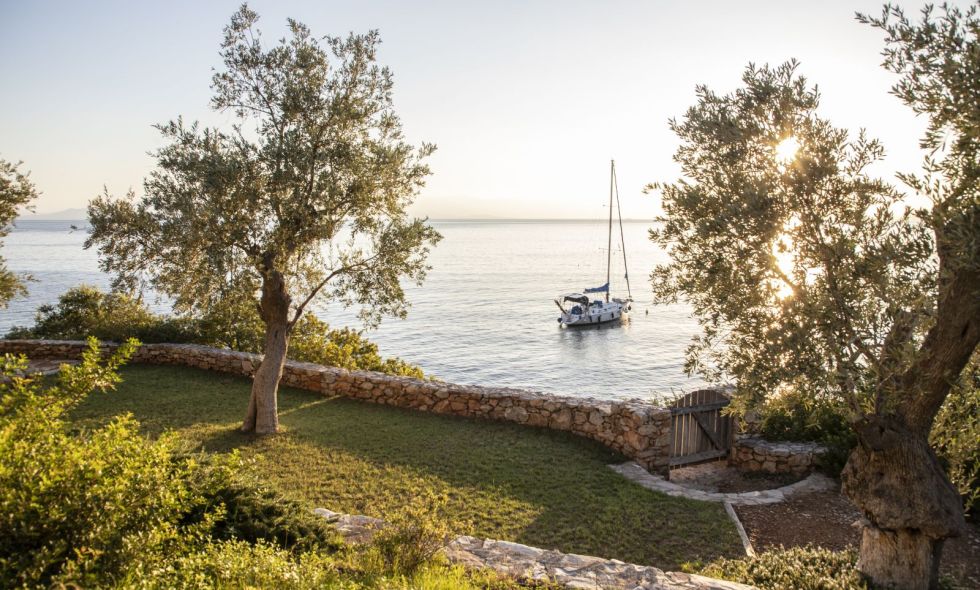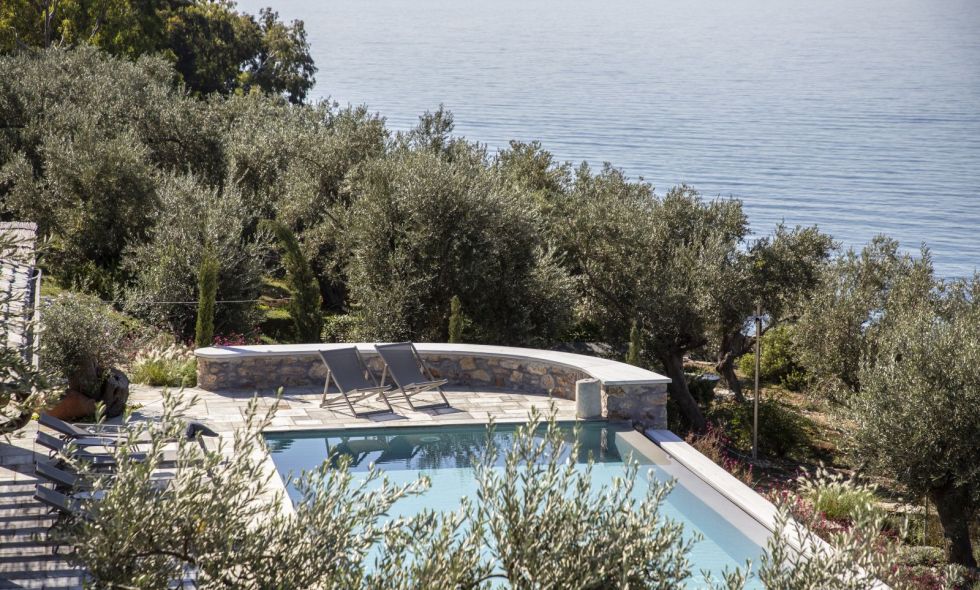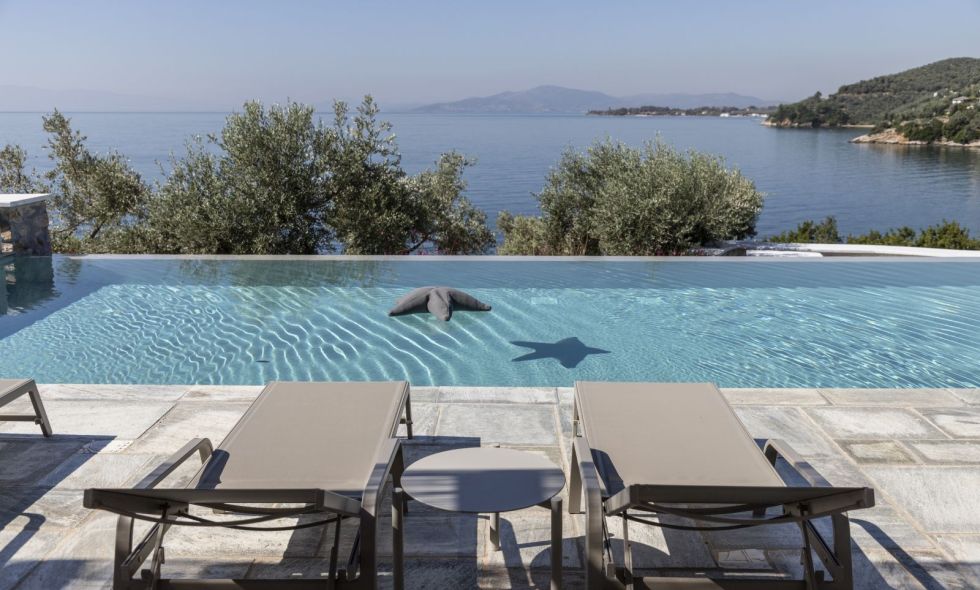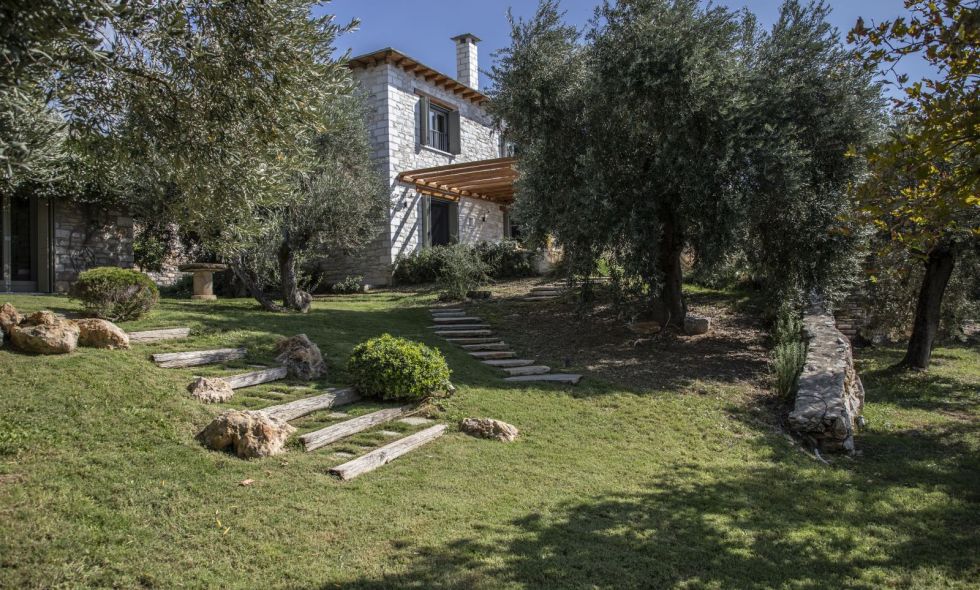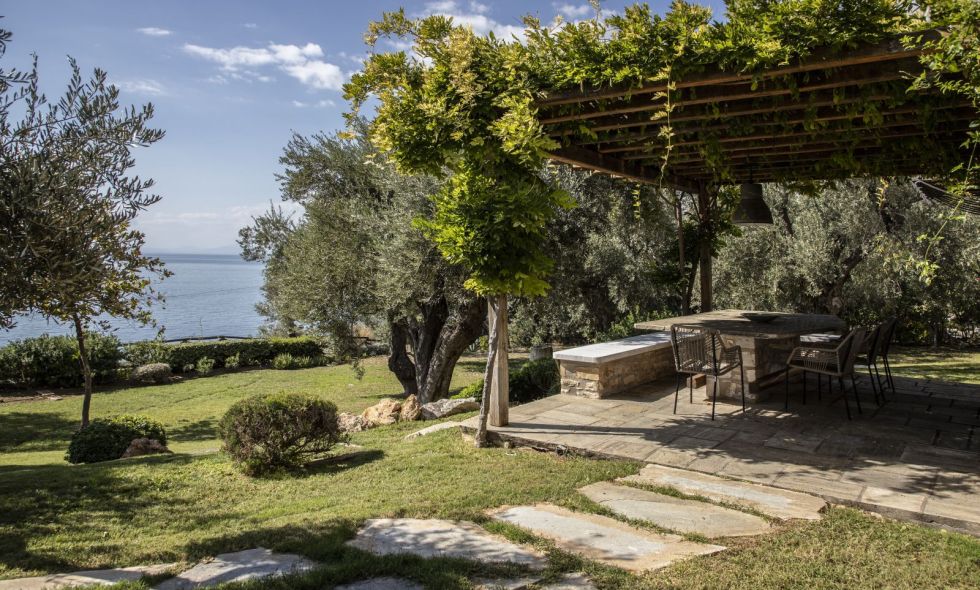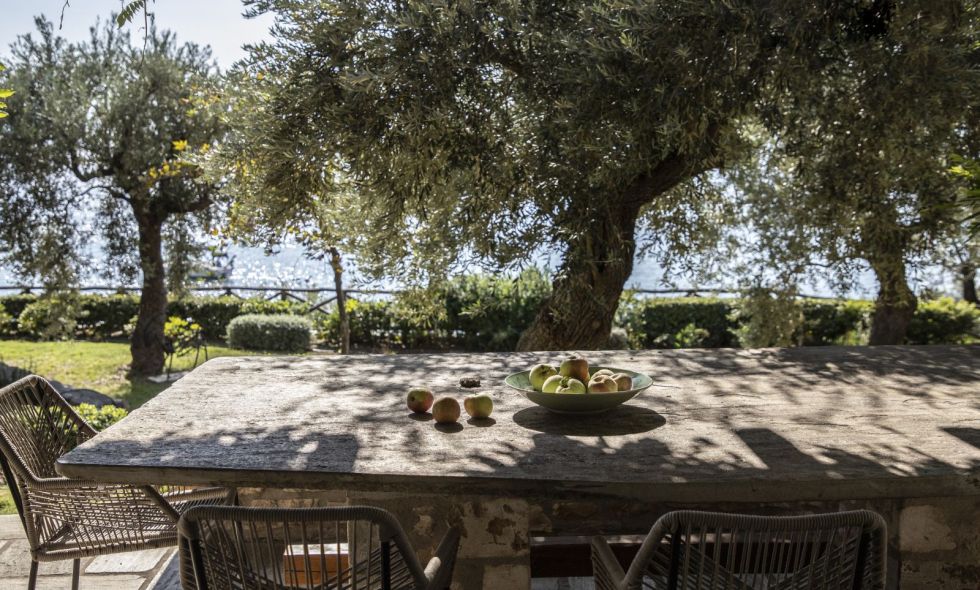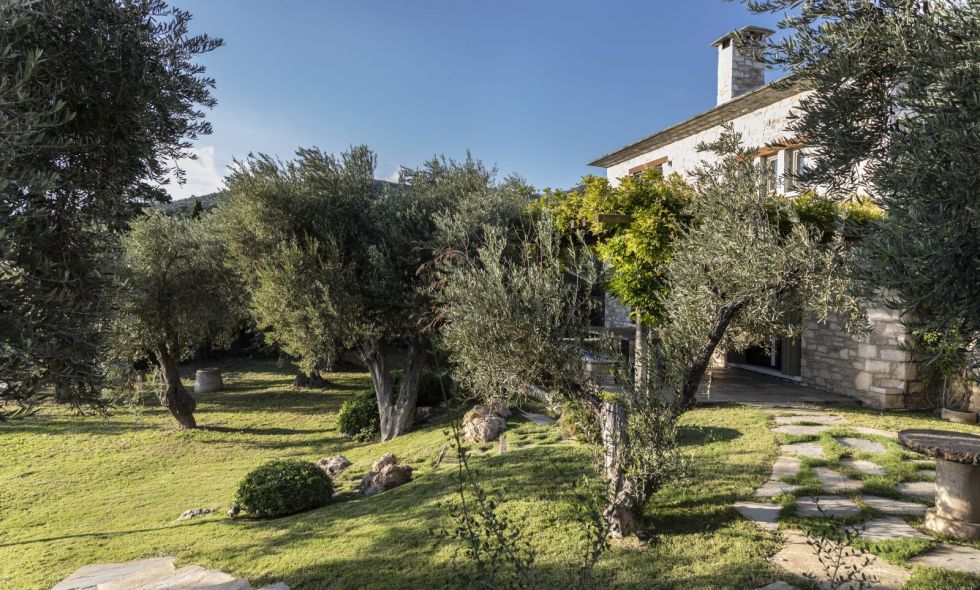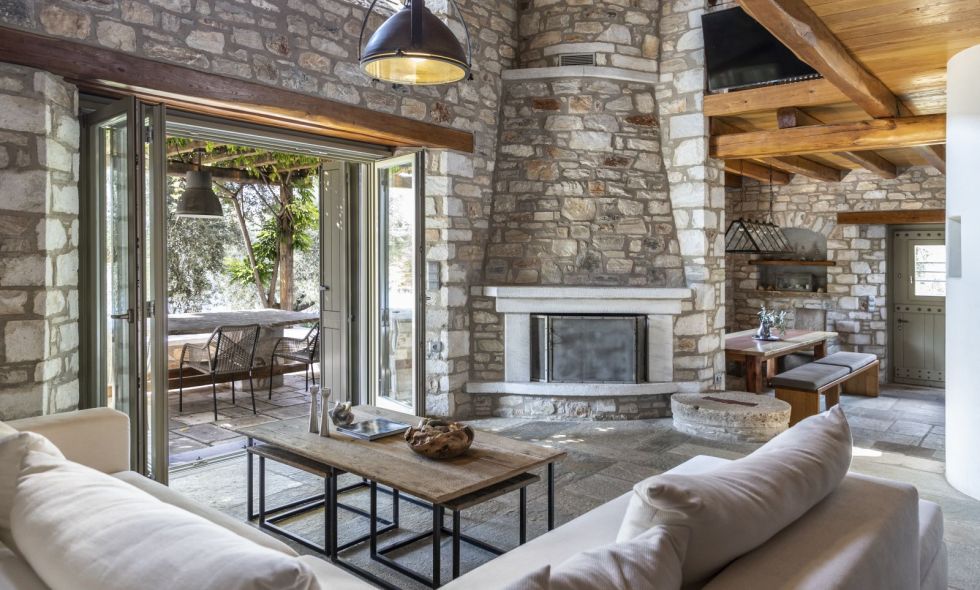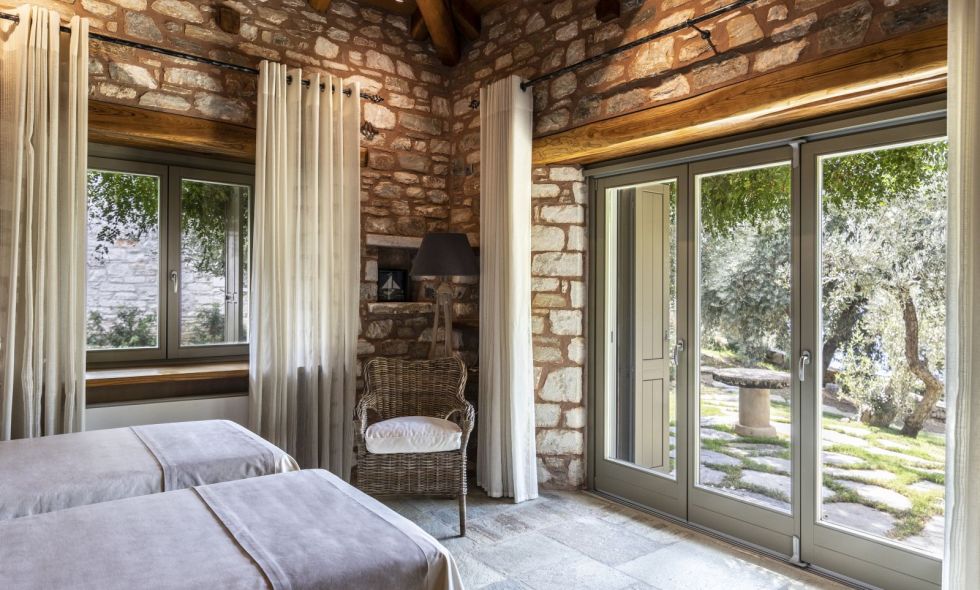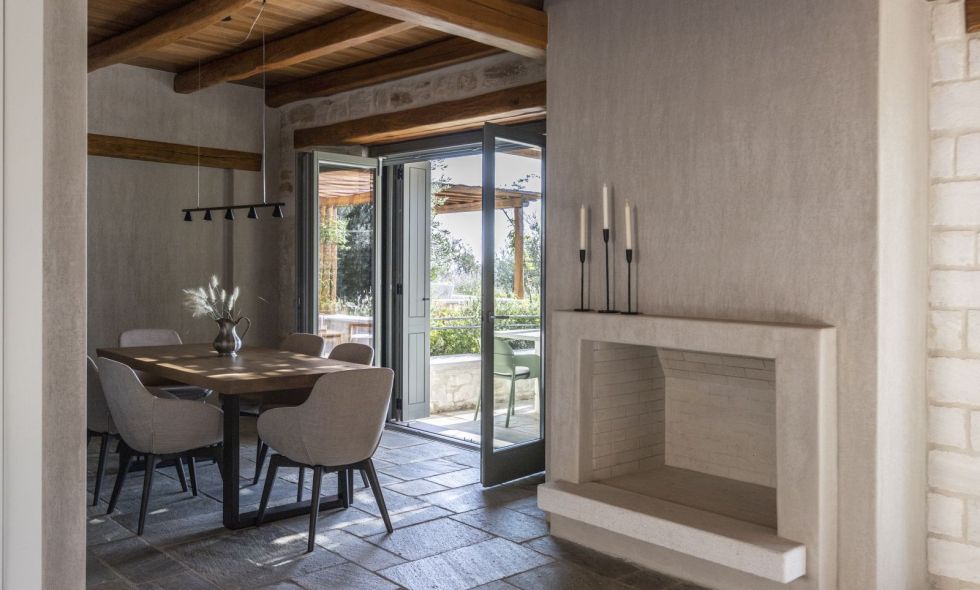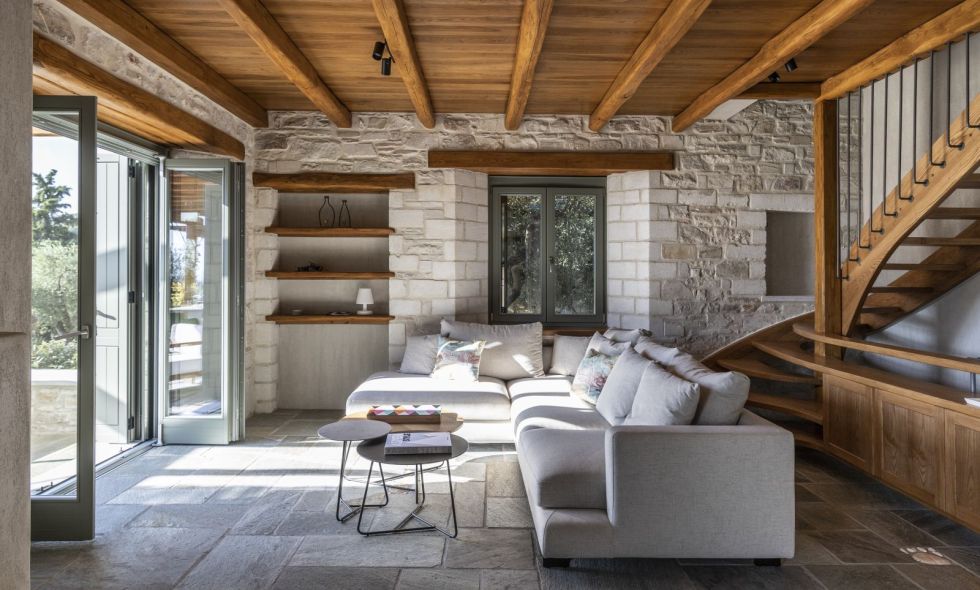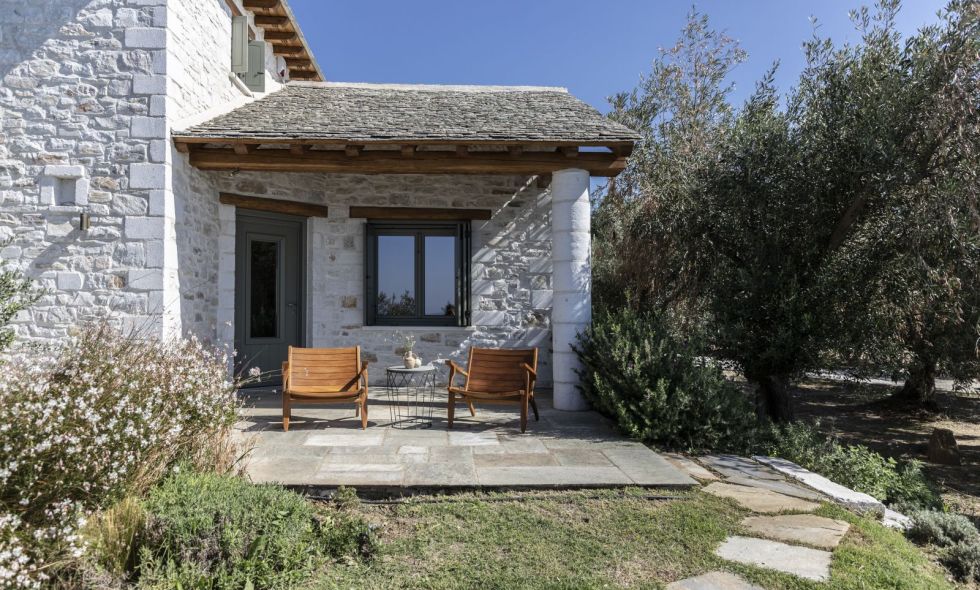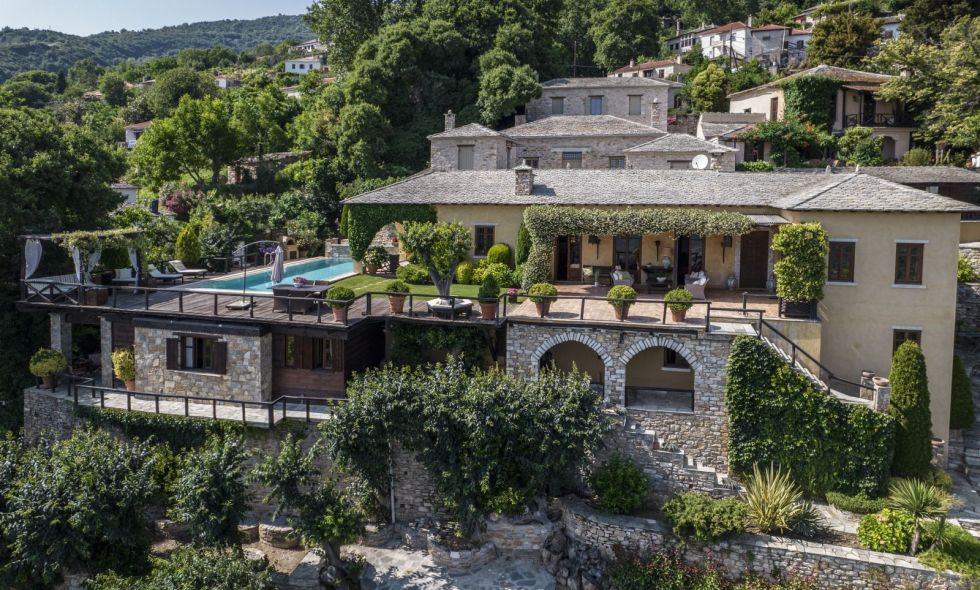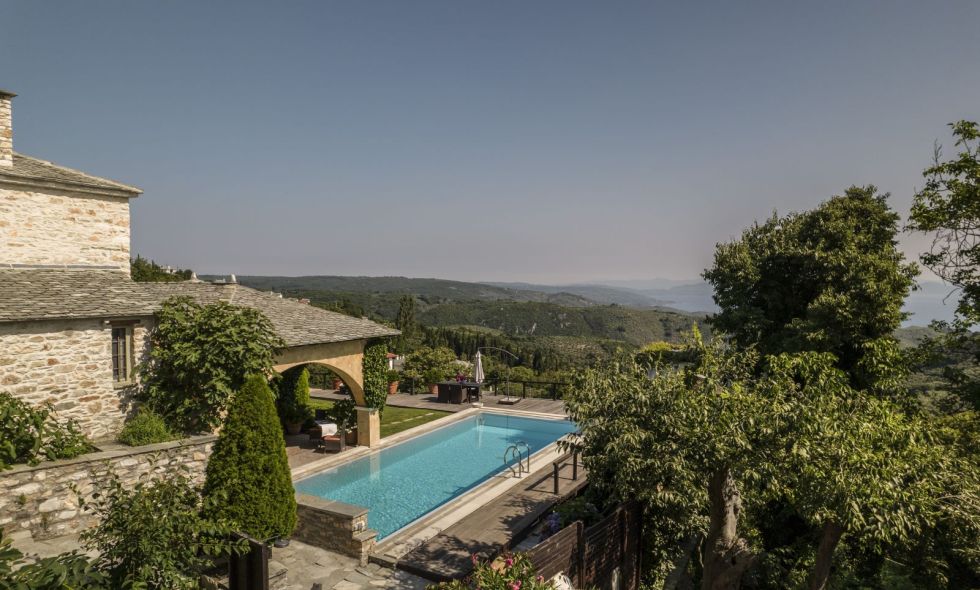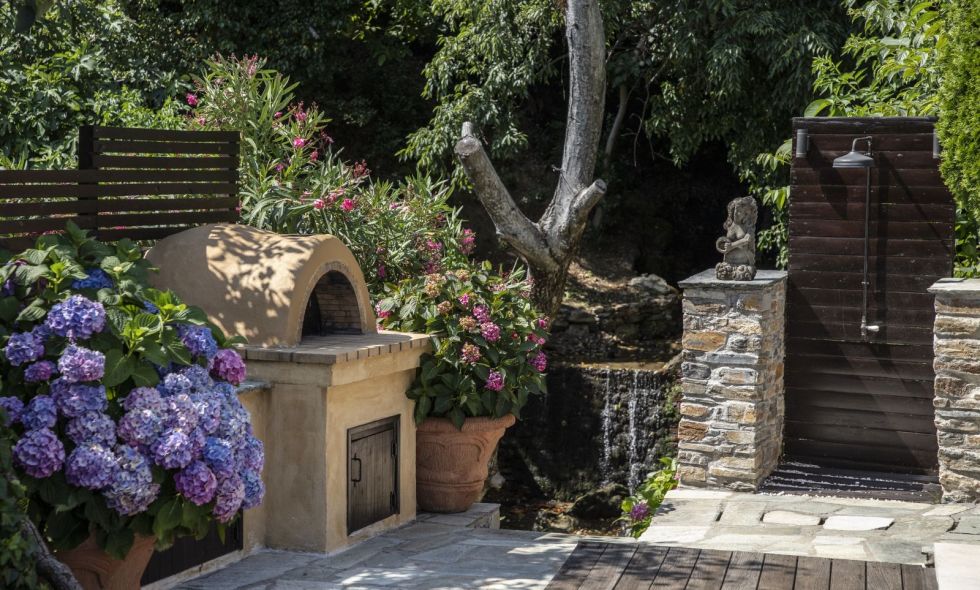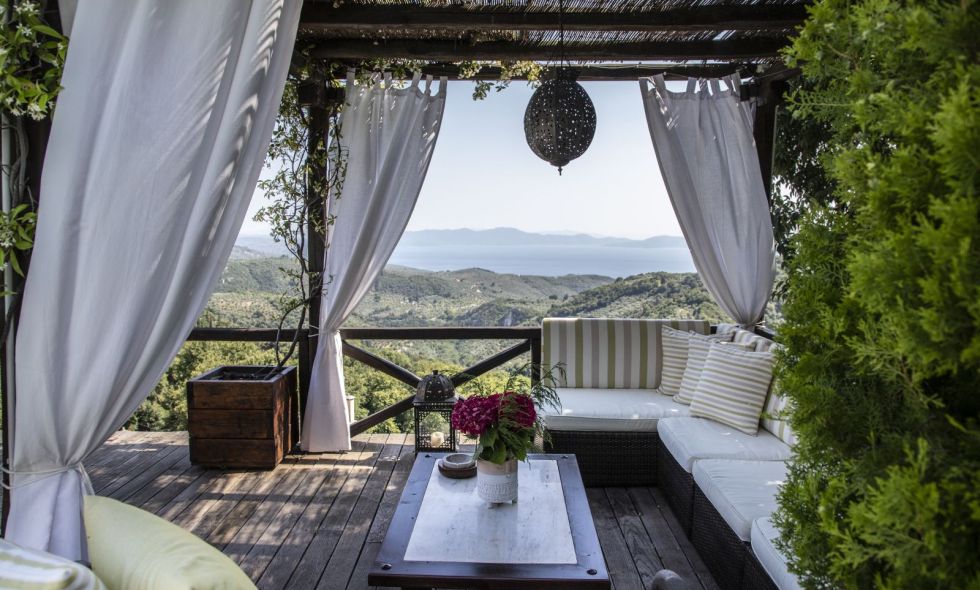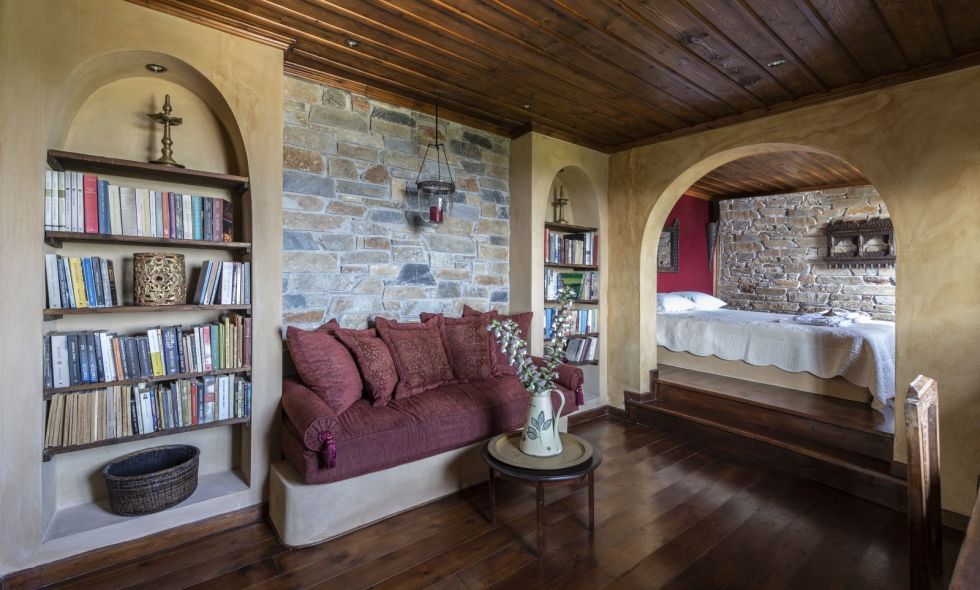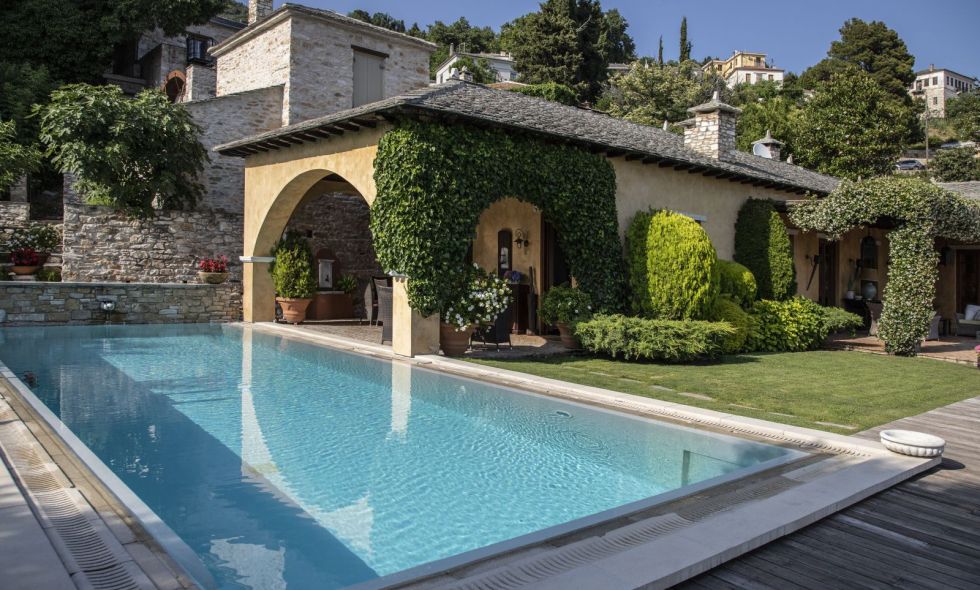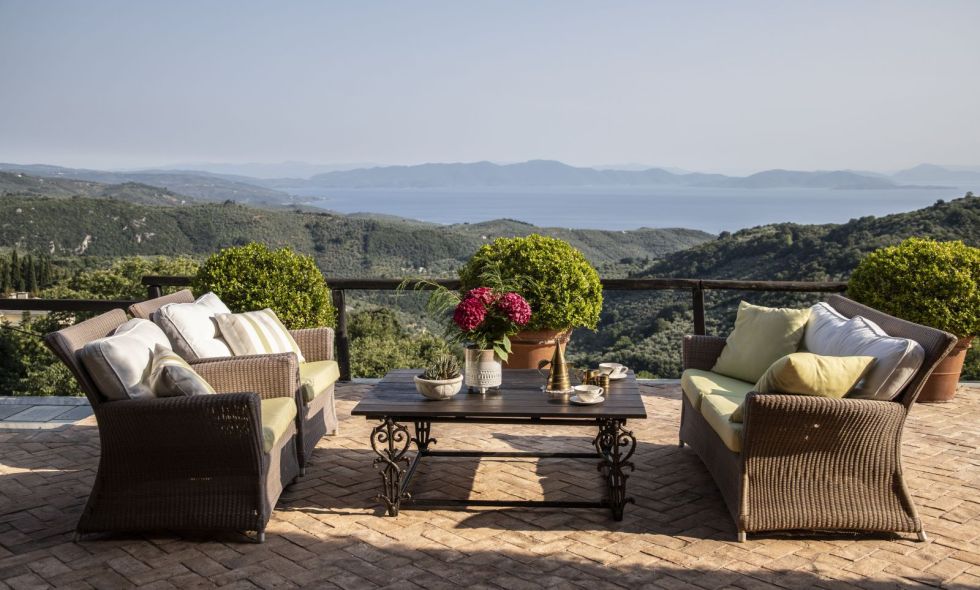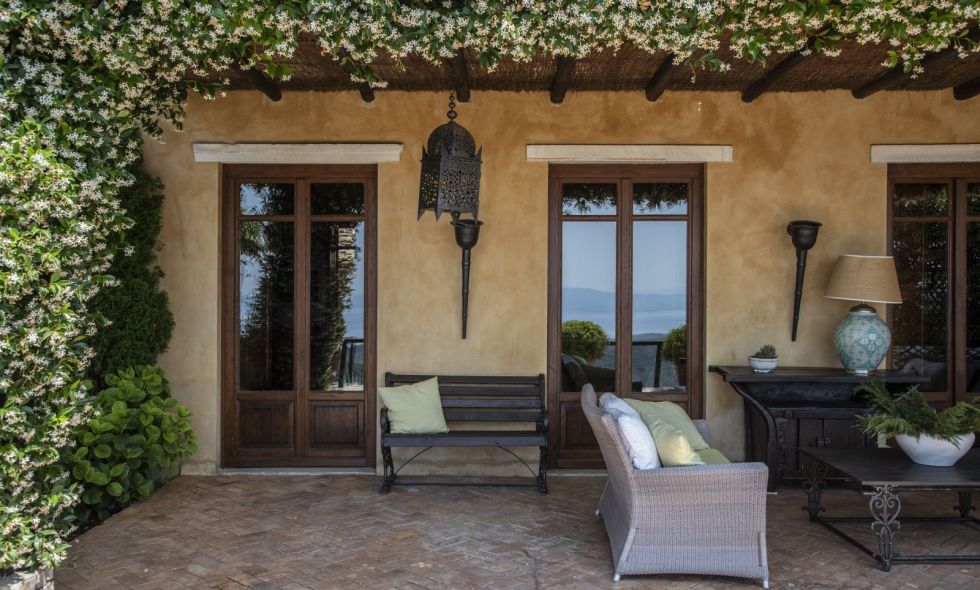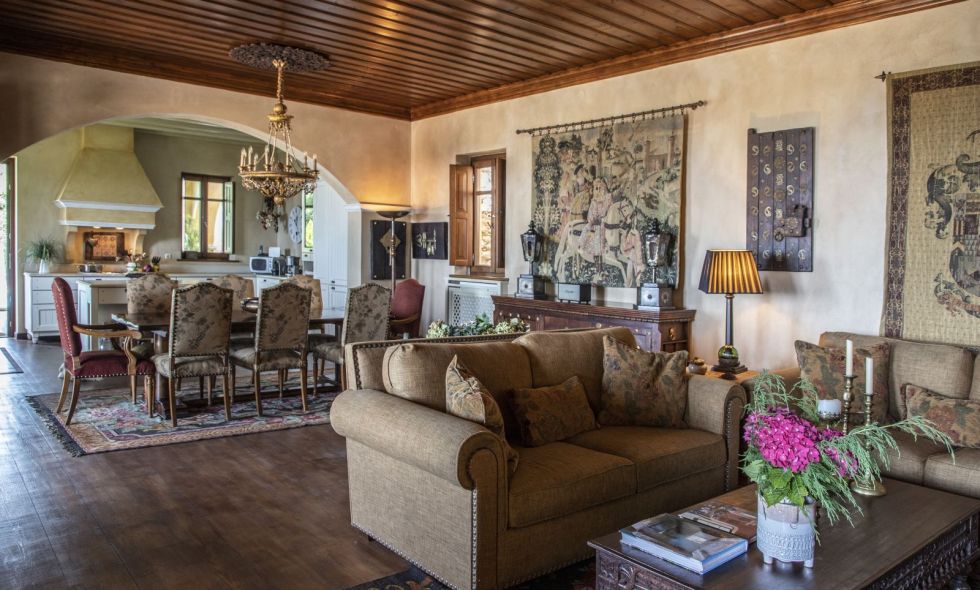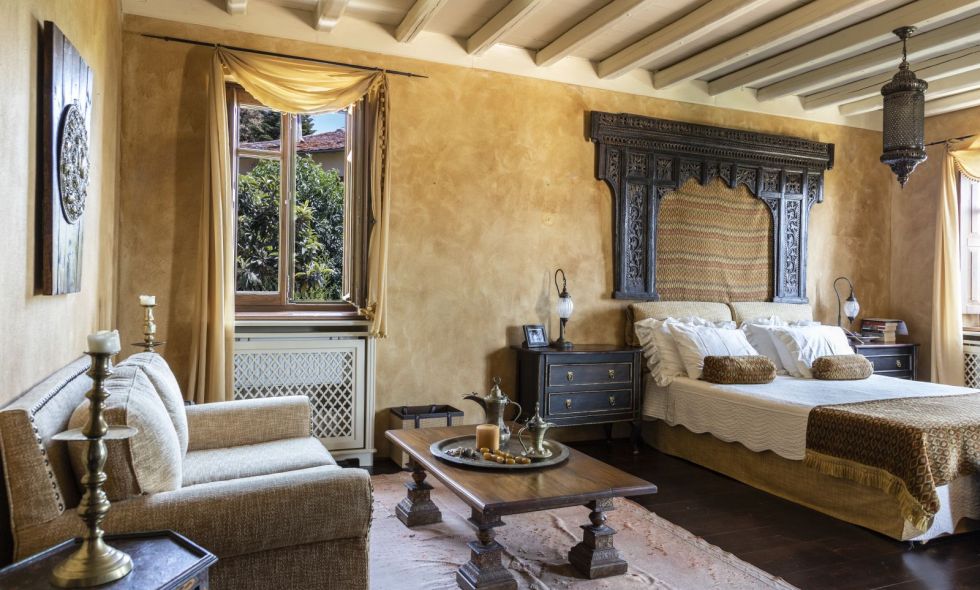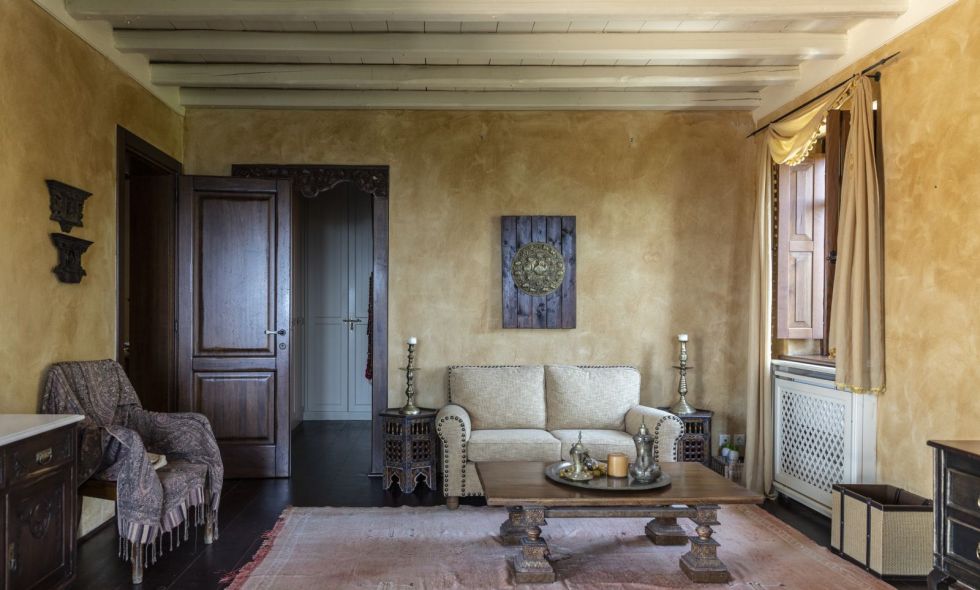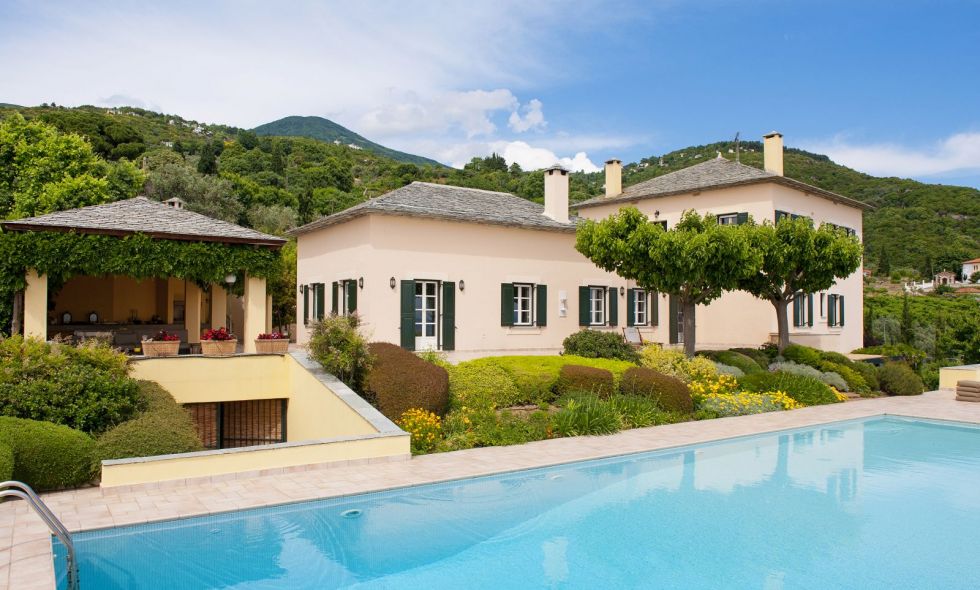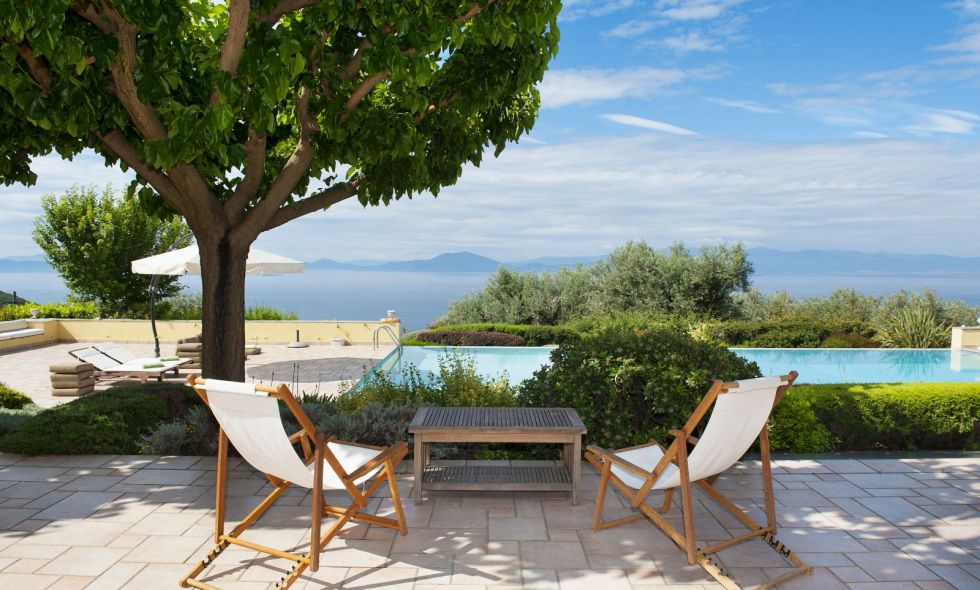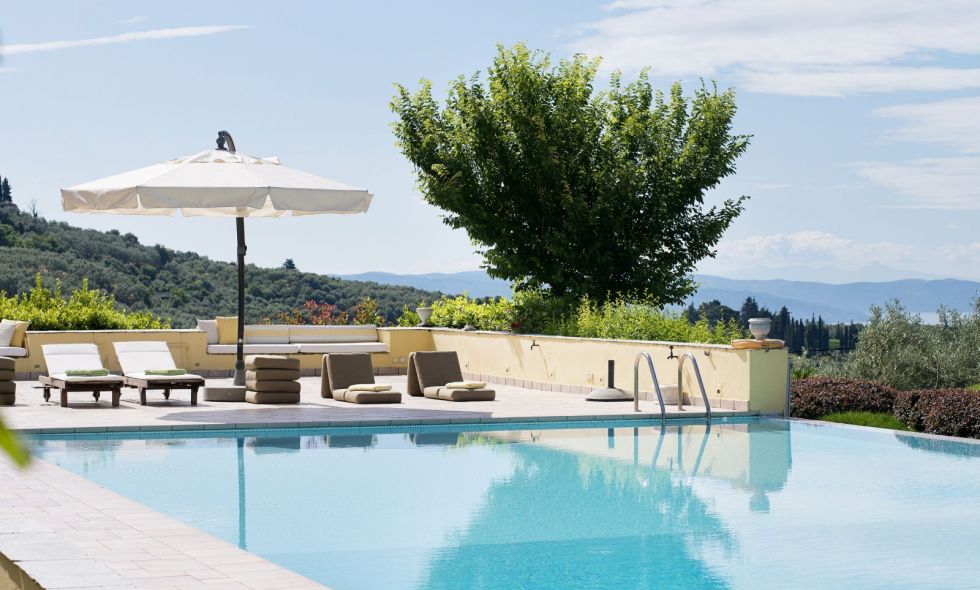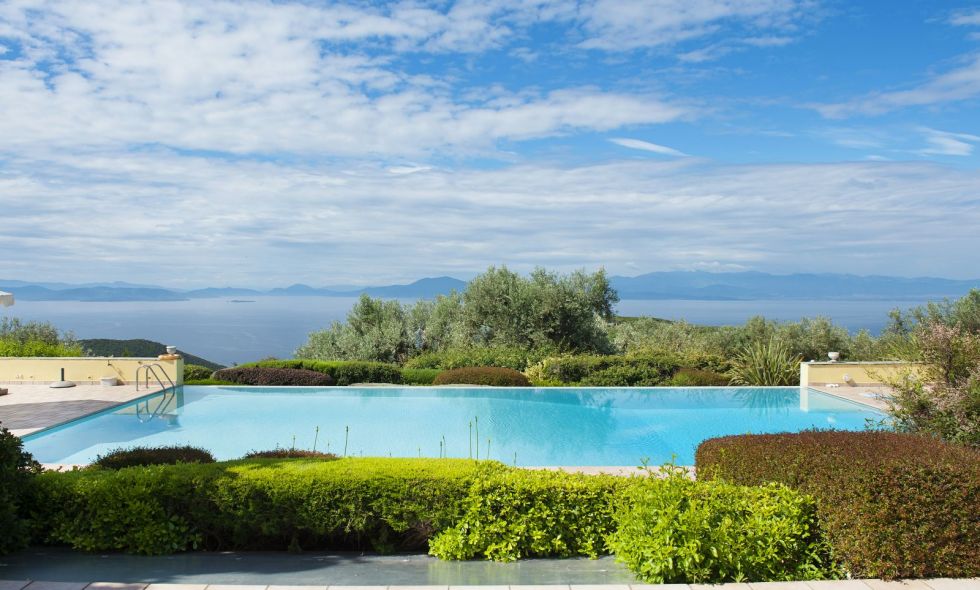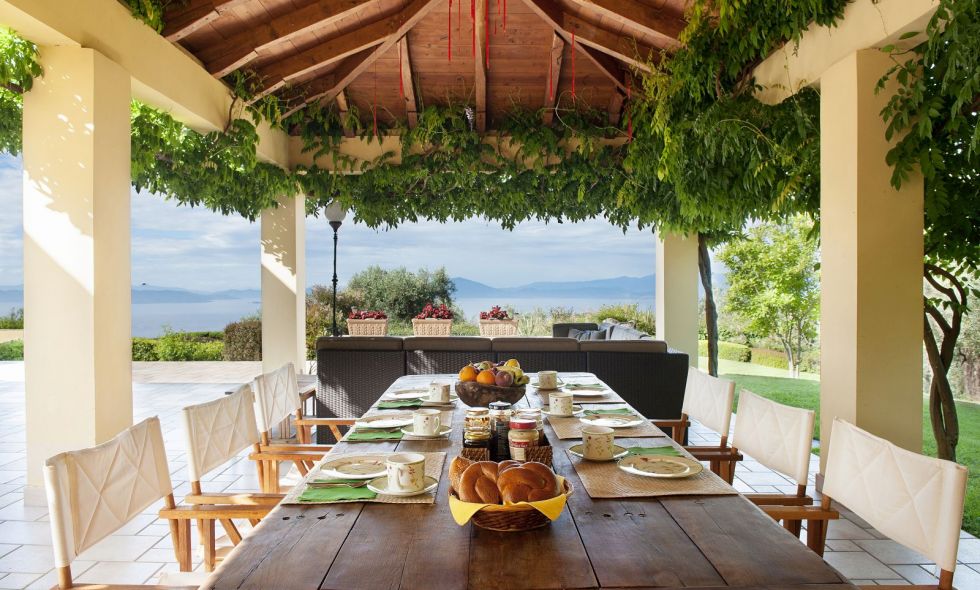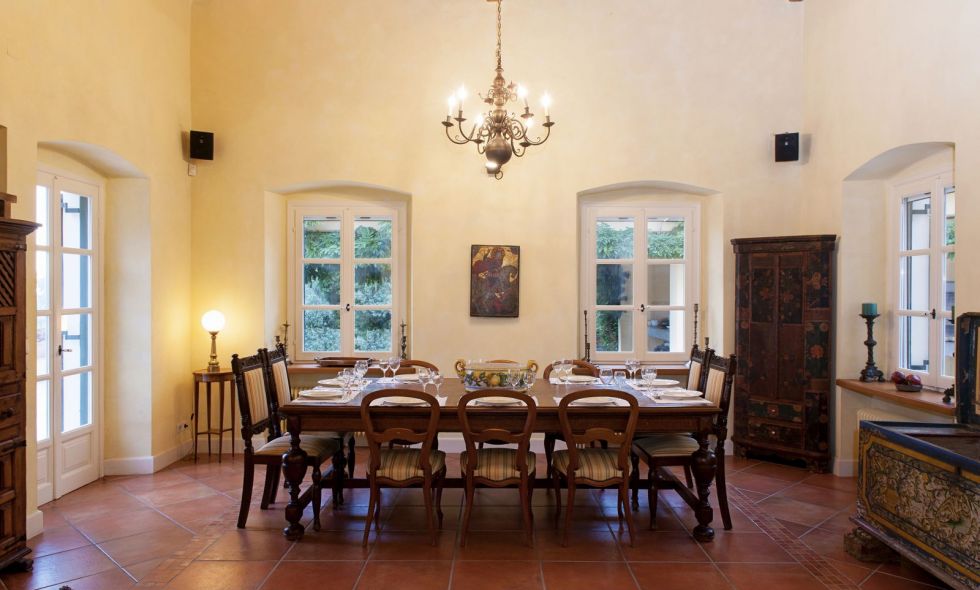A well kept secret , artists, writers, nature-lovers and peace-seekers have long cherished this mountainous peninsula for its cool mountain air in summer, chestnut forests and gushing streams, lovely beaches a short drive away, picturesque ottoman architecture and plane-tree shaded village squares.
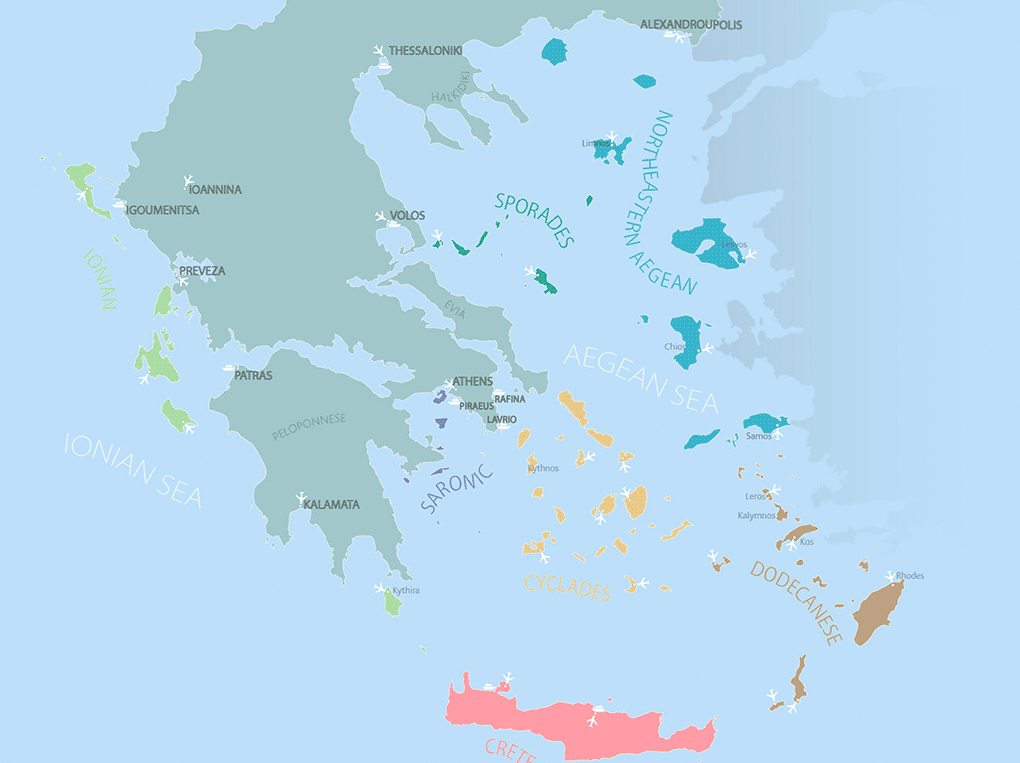
View Map
Pelion Portrait
Pelion is polished wood, cobbled pathways, flowers, backgammon under the plane trees, burbling springs, fresh, earthy peasant food, painted ceilings, warm fire-glow, fallen bronze leaves, stone solidity, salty well-being and civilized equilibrium.
The densely-wooded mountain of Pelion was home to centaurs – mythical half- human, half-horse beings. Chiron, the wisest of them all, raised Achilles, the greatest hero of the Greeks and, before him, Jason, who was to journey far to find the Golden Fleece.
A magical place, in every sense, the human imprint has fortunately been in keeping with the rare beauty of the place.
Pelion is a Joseph coat of many colours – ringing spring greens through autumnal burnished shades of bronze and golds, edged by brilliant turquoise seas with glorious white sandy beaches just a short drive down from the villages. The slopes are cloaked with beech, chestnut, oak and sycamore woods, with babbling streams, waterfalls, slate-roofed Byzantine churches, handsome villages of three-storied stone mansions and venerable plane-tree shaded squares with fountains of icy-cold waters, stone paved walking paths and pack bridges across the streams.
There is a massive internal network of paved paths which always end in village squares, with those plane trees overseeing the community’s life and gatherings, whether religious occasions, fairs, traditional weddings or just an ouzo or coffee over a game of backgammon with friends. Here is the nucleus of social life.
The people of the eastern seaboard were the most adventurous and patriotic, migrating to Western Europe and Egypt, and returning to be the benefactors of schools (Zagora and Milies), founders of libraries of rare books and manuscripts. They encouraged receptivity of new ideas and fostered wide ranges of interest and frequent contact with Europe, despite the Ottoman Turkish oppression. You may see the results of much of this in the architecture, popular art and folklore of the areas.
The wonderful old mansions, built with warm second floor quarters for winter and airy third floors for summer, are the best examples of this dynamic mercantile-based progress. Many were built by craftsmen from Zoupani in Epirus, which accounts for the Ottoman style overhanging balconies on the top floor, and the wonderful wood carvings and painted ceilings and furniture. (Triandafyllou mansion in Drakea).
Tourism is the saviour of Pelion, following harsh destructions during the German Occupation and the Civil War which followed, and then the earthquakes of 1954/5. It is a mild tourism, but year round, with everything from beaches and trekking, to skiing and restored mansions with roaring log fires.
BEST FOR
Fresh, clear mountain air in summer with cool nights offering a sound night’s sleep under a blanket, sipping coffee in ancient, cobbled village squares in the shade of spreading plane trees. Pristine golden beaches and clear turquoise water. Getting away from foreigners and clichéd Greece. Stealing fresh peaches, cherries and apples from the wonderful orchards surrounding the villages, walking though chestnut forests along little streams. Wonderful fresh produce and hearty, authentic, peasant cuisine.
WORST FOR
Winding up the mountain road behind a wheezing tour bus or chain of laden trucks carrying apples to Holland or Germany. Non existent nightlife, and shopping limited to things you can eat or things made of wood or wool.
WOULD SUIT
Those who suffer from the heat, those who relish the discovery of wild strawberries or rare mushrooms, enjoy horseback trekking through woods and glades to empty early morning beaches. Also for those who love pottering in the arts and history of a place. Botanists (carpets of spring and autumn flowers), naturalists (wild boar, hares, squirrels, hedgehogs, stoats, weasels, fox, jackal and tortoise are all well present, and you might even glimpse seals and dolphins), ornithologists (rare owls and nightingales join the cicadas and frogs in an orchestra). Naïve-art lovers – the most famous Greek popular artist, Theophilos, lived here from 1895-1925. He dressed always in Greek traditional outfit of foustanella (white kilt) and tsarouchia (clogs with tassels), and painted scenes of daily life on any wall whose owner might give him dinner.
WOULD NOT SUIT
Those wanting a cool or hip scene, clubs and music, beaches and beach bars at walking distance, jet skiing, and the typical dazzling white and blue cubic island look.
DON’T MISS
An early morning visit to the bakery in Milies where wafts of the fresh-baked olive-bread, cheese-bread or raisin-bread will be your direction-finder. A ride on the most scenic of old steam railways, from Milies to Lechonia. The puffer, known as Moutzouris or Jason, started in 1903 and closed in 1971, but now does sprightly weekend runs, and daily during the summer. The designer and supervisor of the works was Evaristo De Chirico, the father of the famous surrealist painter Giorgio de Chirico. This railway route is now one of the most famous in the world because of its outstanding beauty.
Sensational vantage points. A swim at Saint Saranta beach, Damouchari or Papa Nero. Dine on fish at Delfinia in Horefto or at Meidani in Zagora. Makis in Kissos is the best all-rounder in all the northeast. (His mother’s stuffed pies are mouthwatering.) There is a Womens’ Co-operative selling well-raised plants and home-made jams with a national display in August. Try the chestnut and walnut jams as well as quince and fig.
ACTIVITIES
Horseback-riding (Centauros Farm School), beach sports are available but not hideously promoted as elsewhere. Twenty horse-power boats are available to rent in Agios Ioannis to explore the wonderful coastline with grottos and fabulous beaches.
Detailed trekking maps of a network with footpaths and cobbled kalderimia help you discover the spectacular natural beauty of the landscape and the magic of varied wild vegetation. Even the most demanding seekers of exciting holidays feel satisfied by the exhilarating exploration of the land through trekking, horse riding, mountain biking and walking.
HIGH SEASON
Lots of organized day tours from Volos clutter the roads and main small towns. Famous beaches such as Agios Ioannis are now tacky with an overkill of visitors. Cool nights, green forests and fresher, clearer air offer welcome respite from the parched barrenness of most of the rest of Greece in summer.
LOW SEASON
The golden glory of Pelion is the autumn leaf turn of its myriad trees. Gentle life in the square, soft mornings, low-key exploration, still-warm swims. Storms up here are spectacular, and temperatures fall fast and hard. Bring warm clothes!
We do not show villa details on our site to protect the exclusivity of our owners’ properties. We offer a unique personal service to locate the perfect villa or yacht for you – to see villa details and get our expert guidance and insight please get in touch.
Our Villas in Pelion
Read about our villasThe mountain village idiom is of stone walls, pitched and tiled roofs, fireplaces, balconies, carved furniture, wooden ceilings and roses in the garden- choose between mountain village houses with lovely views, or a wonderful cluster of stone cottages on a beach.

